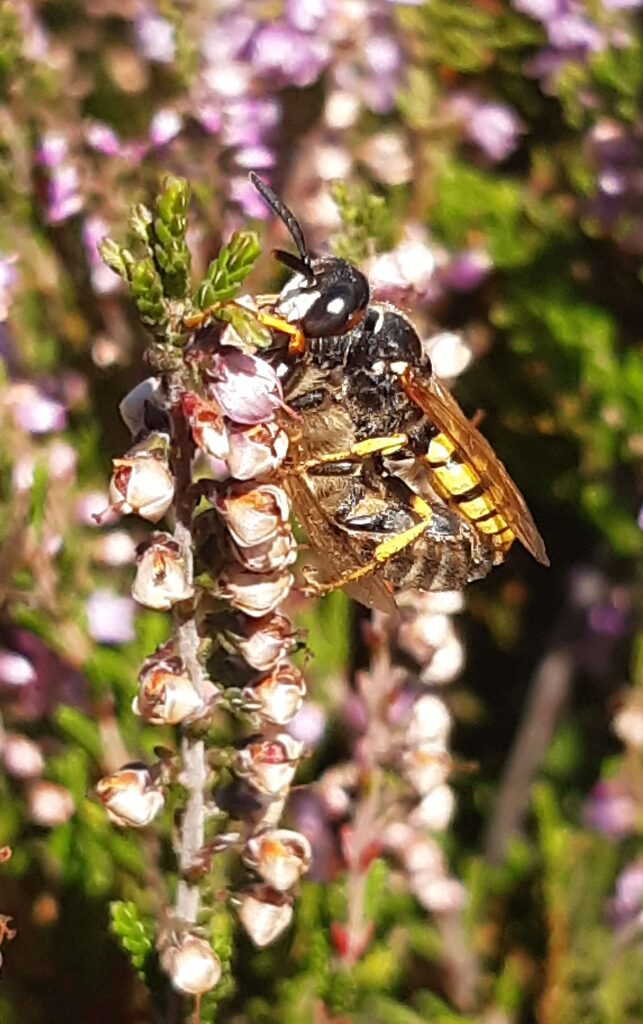
Bee-Wolf


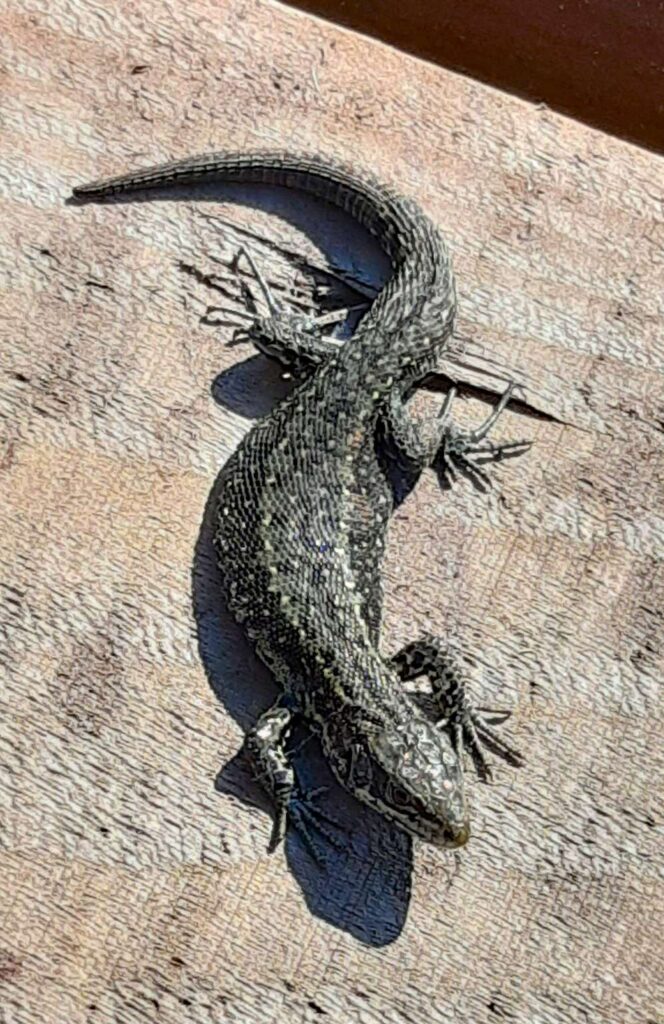
A few years ago, BC (Before Covid), a major fire burnt many of the Pines and Birches that had invaded the heathland of Thursley Common; and unfortunately, the fire took hold on the wooden boardwalk that crosses the national nature reserve’s marshy area, and destroyed nearly all of it. This mattered, as everybody enjoyed the open airy walk, summer or winter, across the flat expanse with its rare habitats for Southern England — acid bog, bog pools, heath — and its rather special inhabitants, including lizards (and snakes), many species of dragonfly, marsh orchids, bog asphodel, skylarks, curlews, and more. Suddenly, visitors were confined to the edges of the reserve.
Well, people agreed the boardwalk must be rebuilt, and finally, here it is.
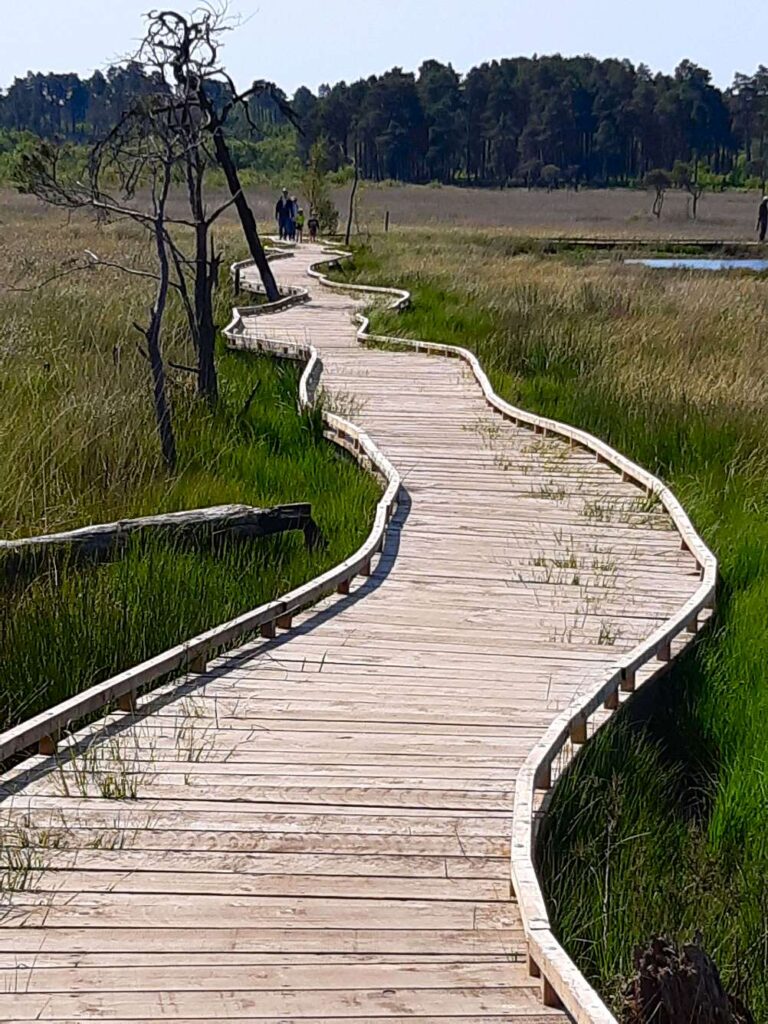
The wooden substructure has been replaced with posts and joists of recycled plastic. This artificial wood costs more than real wood, but will with luck last for many years: it’s invulnerable to rot, at least. Whether it’s actually friendlier to the environment is an interesting question: at least it doesn’t constitute new use of fossil fuels, or at least, not terribly much; wood is of course a fully renewable resource, as long as it comes from properly managed forests like those in Northern Europe. It could mean less maintenance and disturbance to the reserve, as it should need to be dug out and replaced far less often.
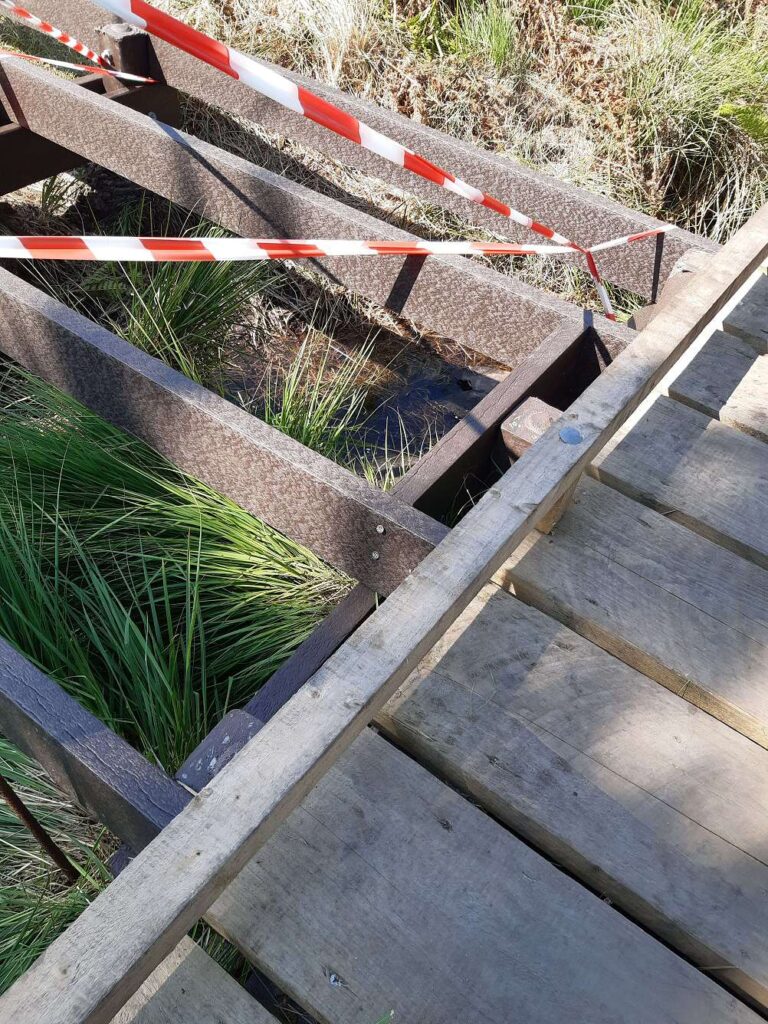
Fire is clearly now a sensitive matter on hot sunny days, with the unfamiliar sight of a Surrey Fire and Rescue Service truck patrolling the reserve, presumably to forestall any barbecue or picnic stove fires. There has recently been a serious fire across the road on Frensham Common, so the danger is close and real. We received a professional drive-by glance as we ate our definitely-cold sandwiches beside one of the bridleways. It’s interesting to see fire-watching in action here in Britain; in America, it has been going on for a century, and its effect there has been to allow the build-up of an enormous reserve of dry timber and brushwood across the national forests. That has been followed, one might think inevitably, by major fires that have burnt far hotter, for longer, and over much larger areas than previously.

When I lived in Suffolk, it was a common practice among the older local people to go for a picnic on the heaths on a nice sunny day; and when the thermos of tea had been finished, to set fire to a little bit of the heath, which then smouldered and burnt quietly in an unobtrusive sort of way, removing the taller bushes of heather and gorse, and probably some small saplings into the bargain. This does little damage to the wildlife, and in fact favours (rare) heath over (common) trees, effectively managing the habitat by interrupting the ecological succession to forest. As such old-fashioned, seemingly casual management has fallen out of fashion, fire has become more and more of a problem. Of course, with global warming, hotter summers and lightning strikes become more and more likely, so large and destructive forest fires are becoming more frequent.
So, I’m not averse to seeing the fire truck: nobody wants to have another disastrously hot fire on this common or any other. But fires will happen, and better many and small than few and hot. So perhaps the fire-watching needs to be supplemented by a little carefully-managed fire-setting. Let’s hope that’s in the reserve management plan. Without it, woody plants can be controlled by cutting — for instance, a tractor can mow heather to remove excess wood and cut small tree seedlings — and by grazing, and indeed there are some grazing areas at Thursley. But anyone who looks at the common will see a mass of invading Birch and Pine saplings, and they may well wonder whether the current management regime is sufficient.

The pools were alive with sparkling dragonflies, really difficult to get binoculars on to, as they flashed, dashed, darted, chased, and flickered to and fro, defending territories over the best bog pools and floating vegetation. I was delighted to find a group of Downy Emerald Dragonflies strutting their stuff over the glorious water lilies in Moat Pond. The bog pools also harboured Black Darters (more often seen in Scotland than the south of England), Broad-Bodied Chaser, Four-Spotted Chaser, Common Blue Damselfly, and a Banded Demoiselle. More than likely there were several other species present but as they hardly ever settled, and as the brisk breeze gave them afterburner-speed, it was not easy to tell.
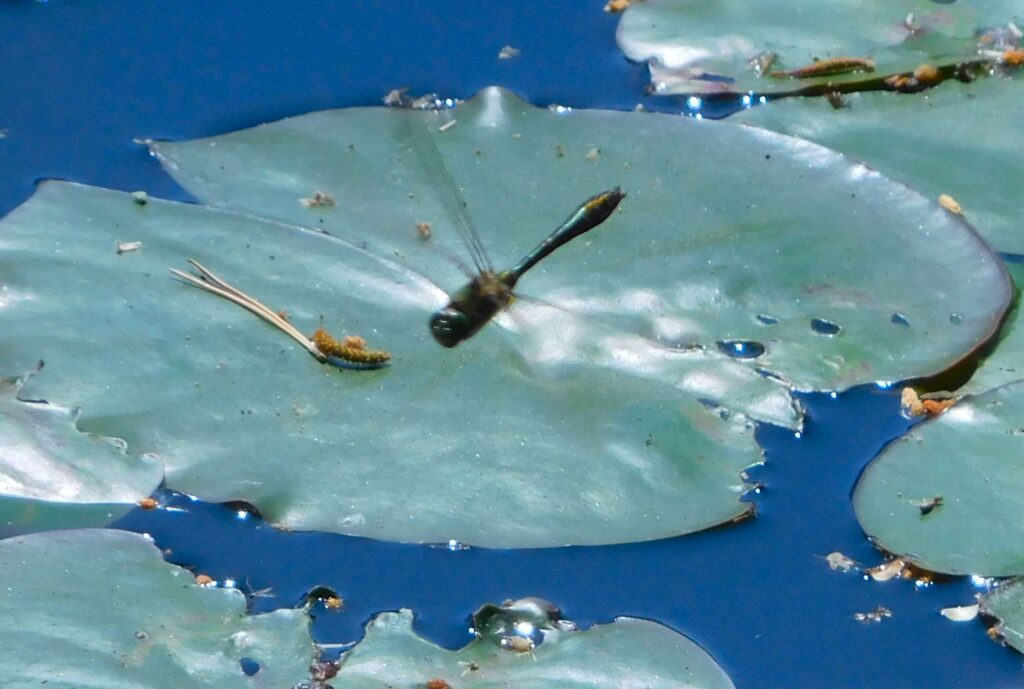
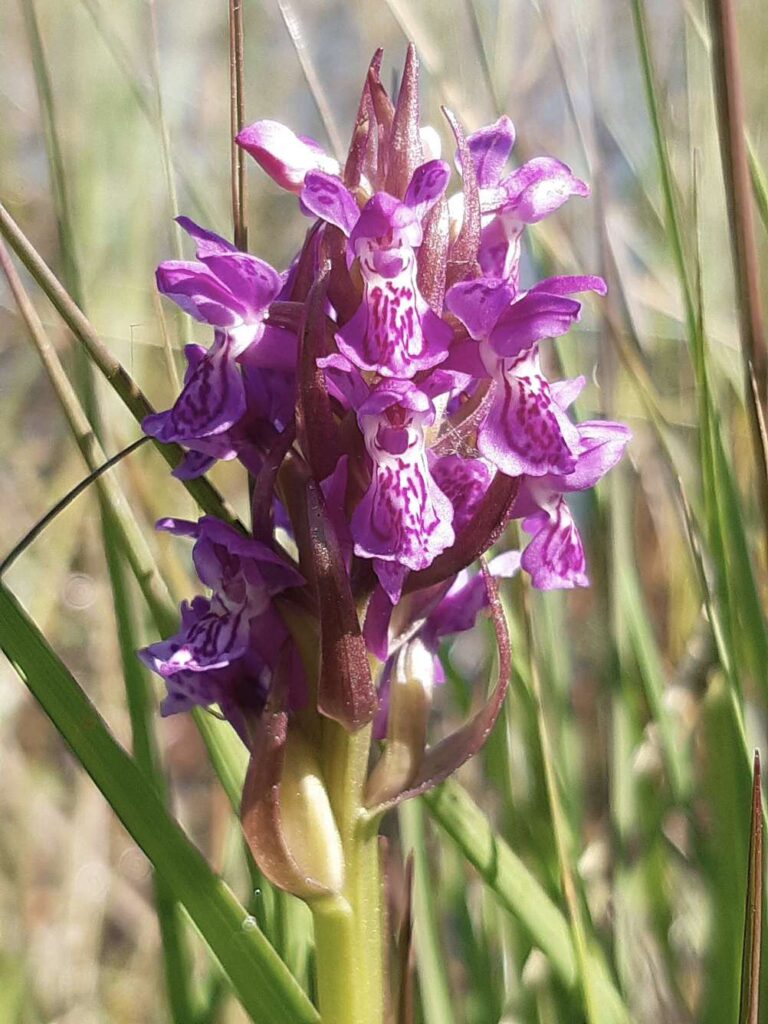
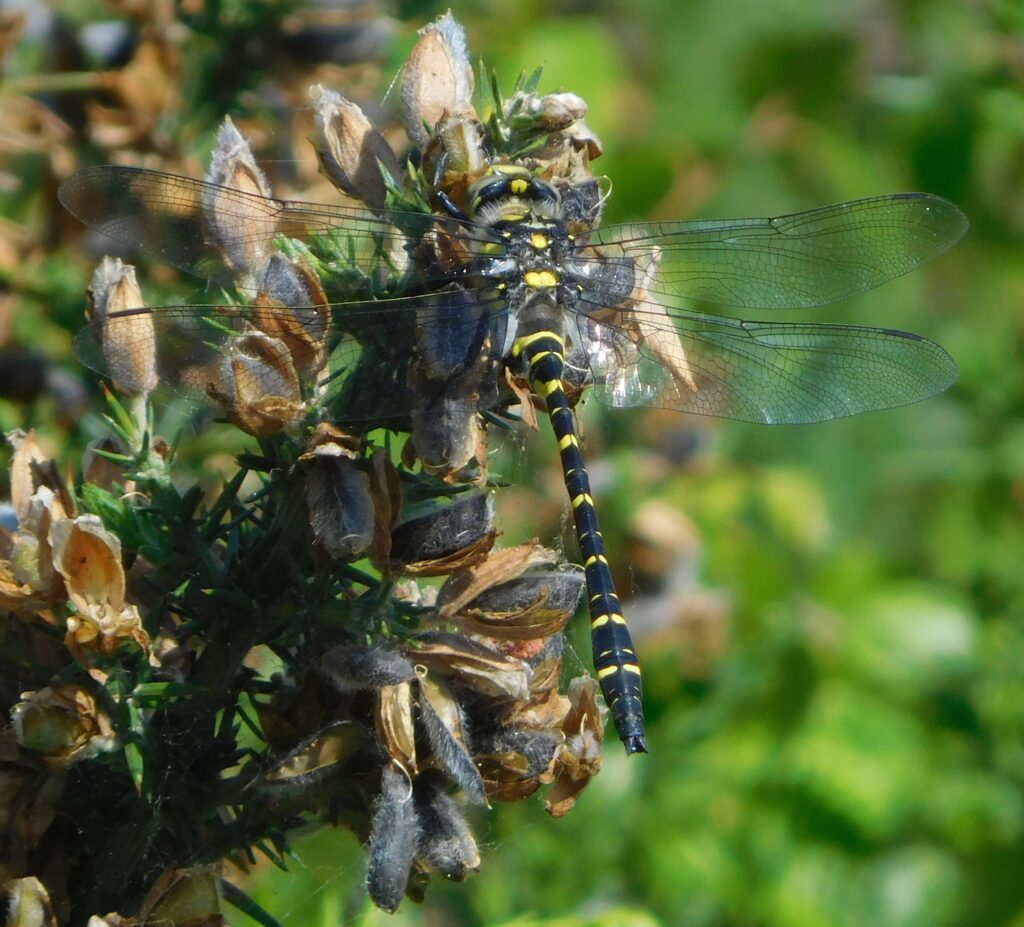
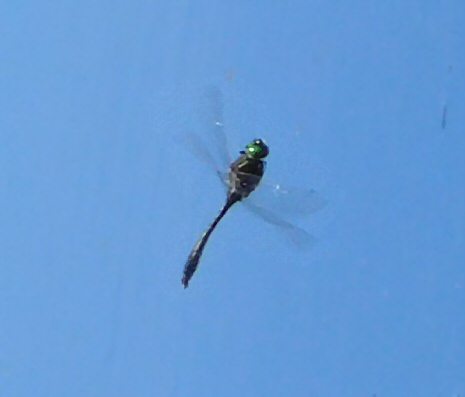
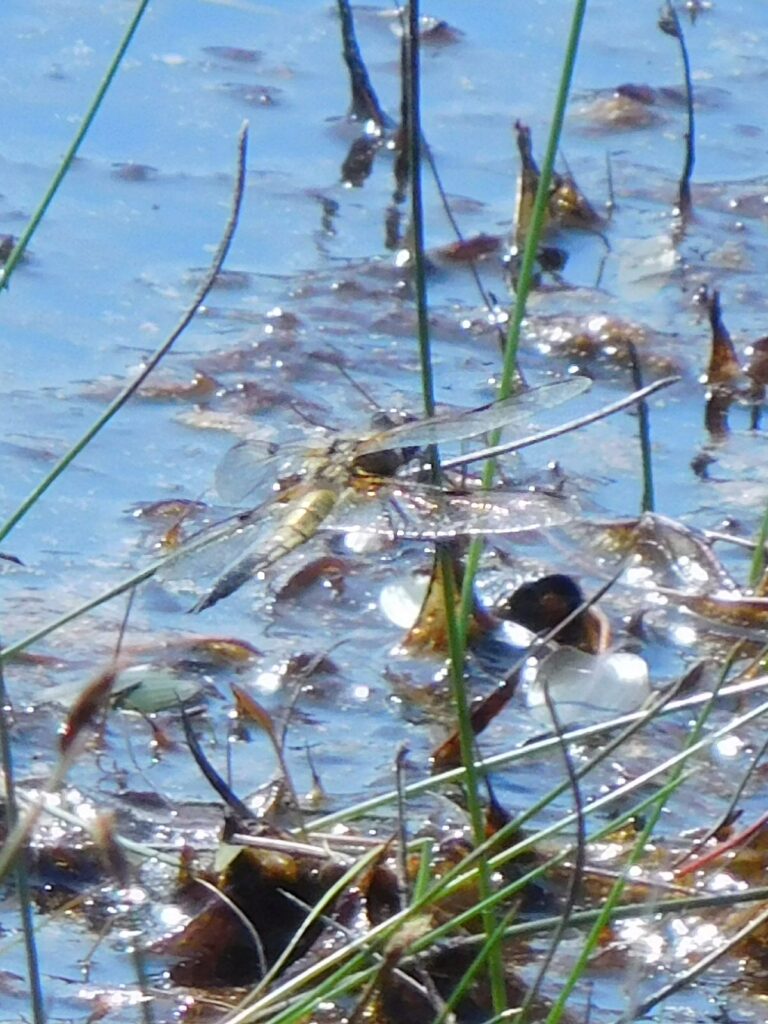
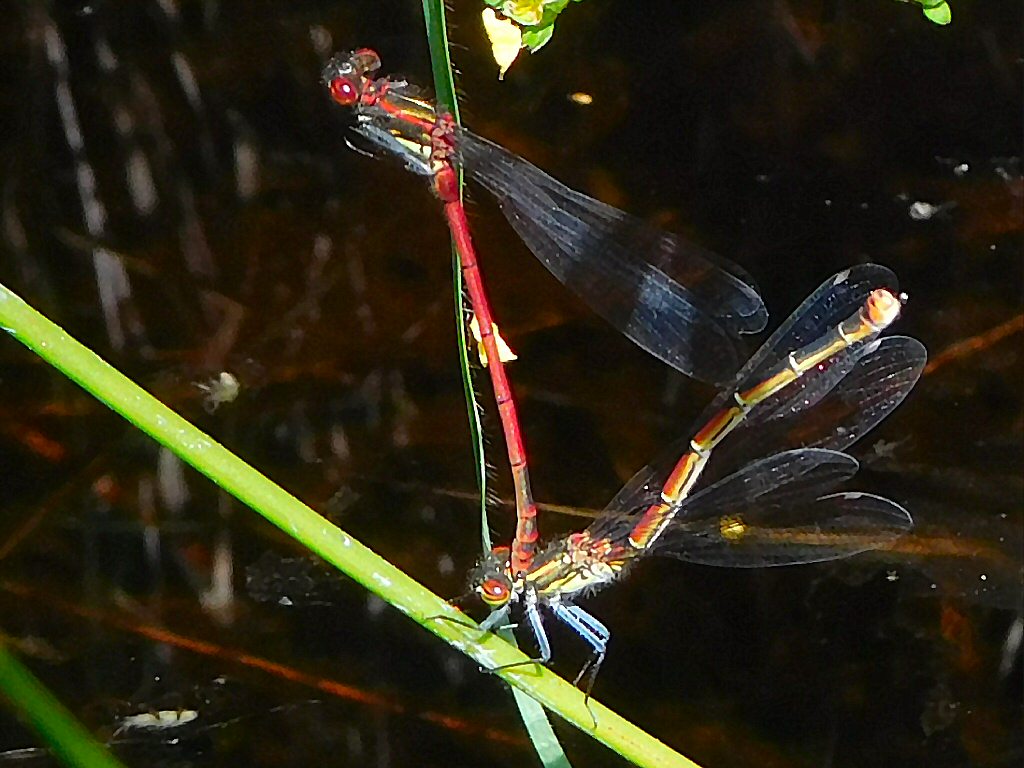
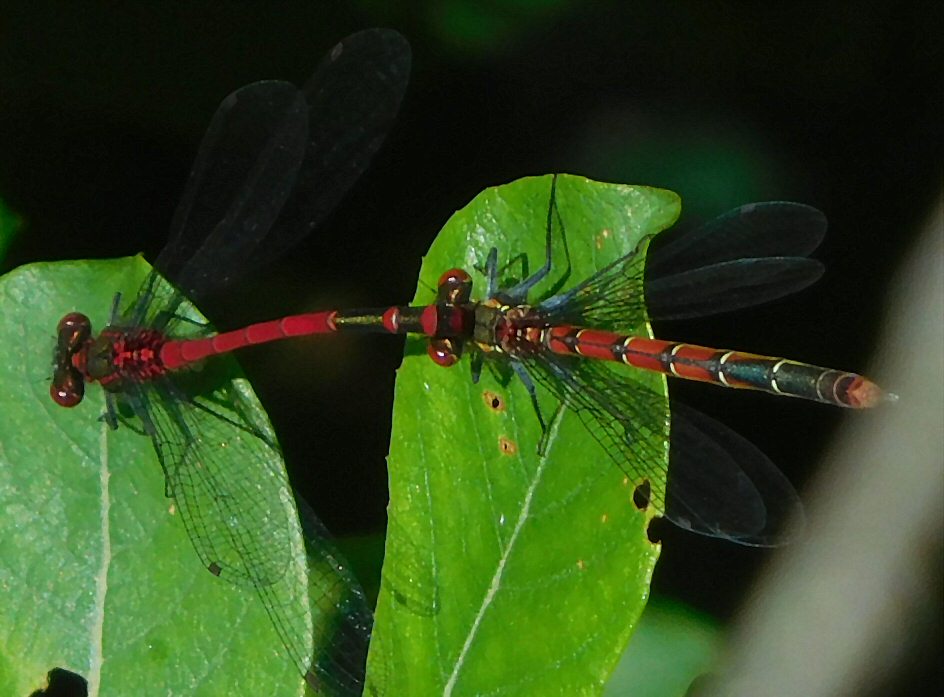
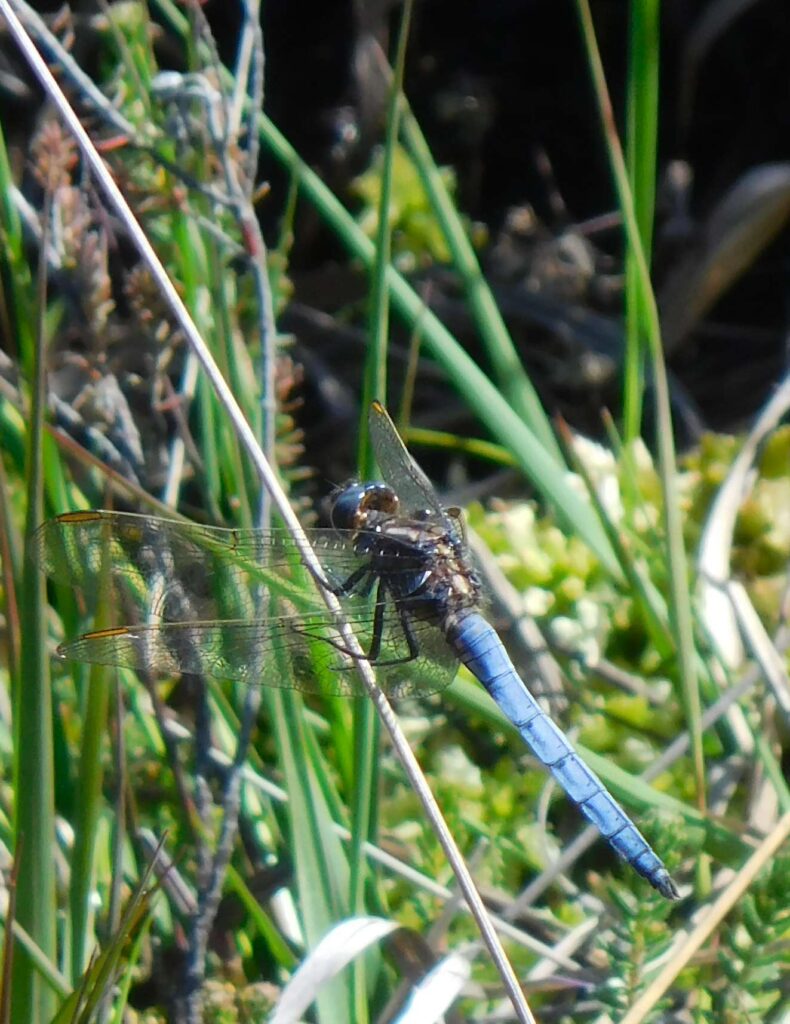
Also seen: one Emperor over the Moat Pond; Common Darters; Southern Hawker; Common Blue Damselfly.
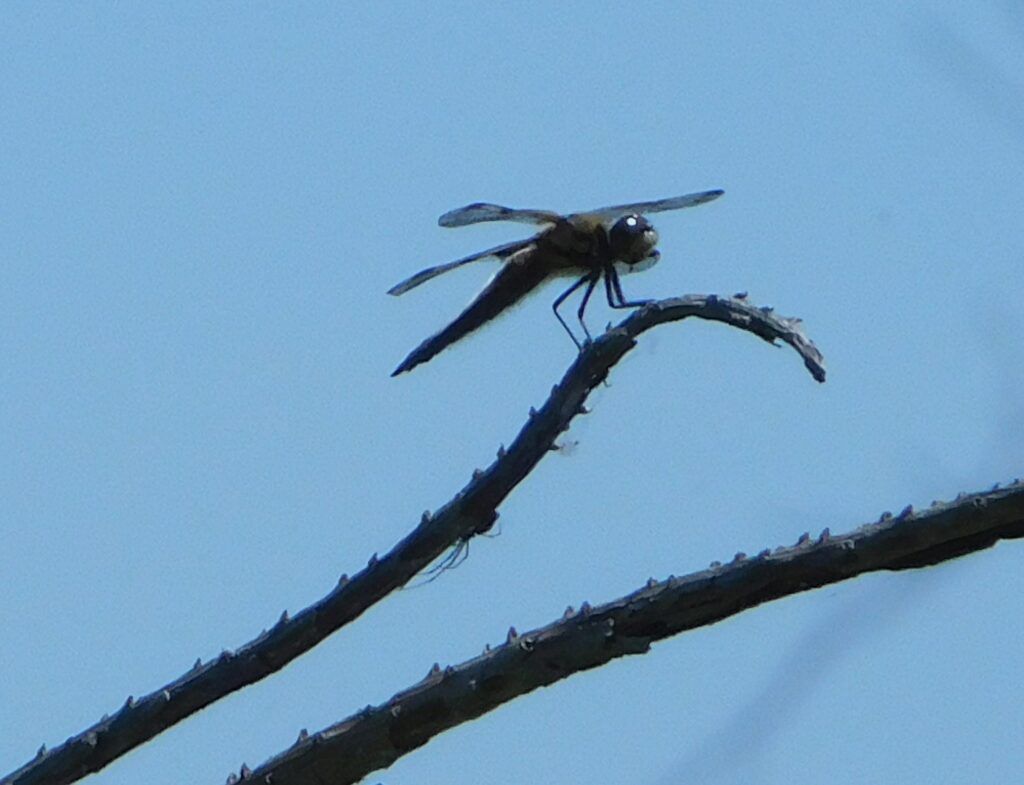
There were few birds about, but they were good: the only pair of Curlews nesting in Hampshire, both seen, and both heard, flying from their nestplace over the bog, calling continuously (and evocatively) and landing separately; Dartford Warbler, a terrific view, the long tail cocked, and hopping about on a tuft of dry grass; Stonechat; Skylark; Buzzard. On the main lake, just Mallard, Coot, Tufted Duck; on the Moat Pond, Moorhen.
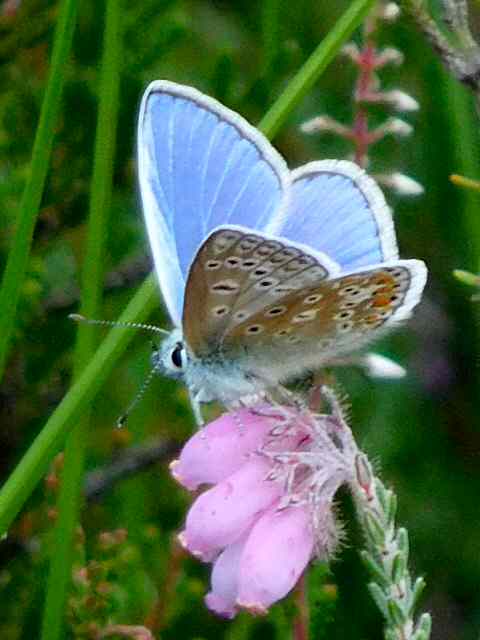
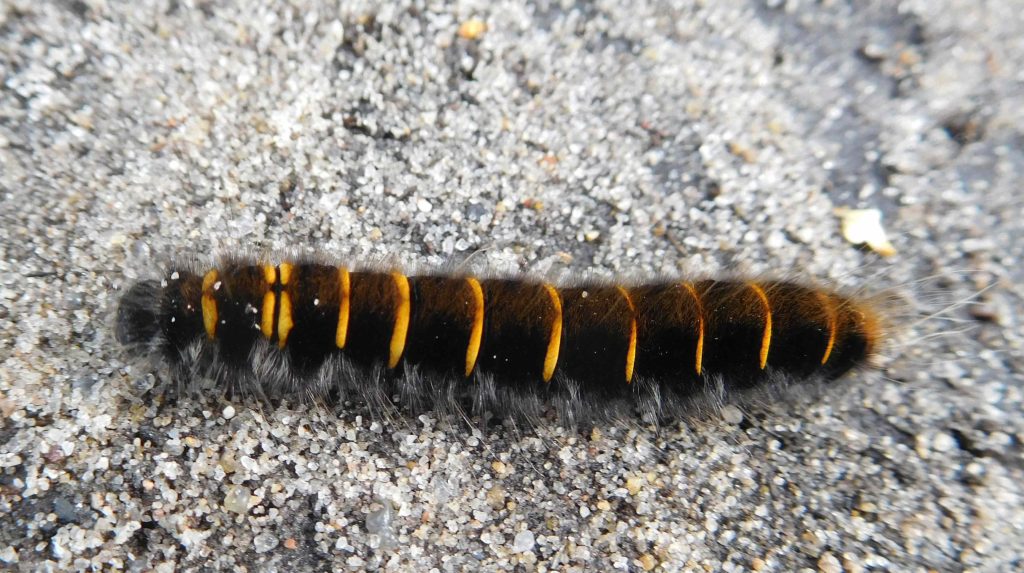
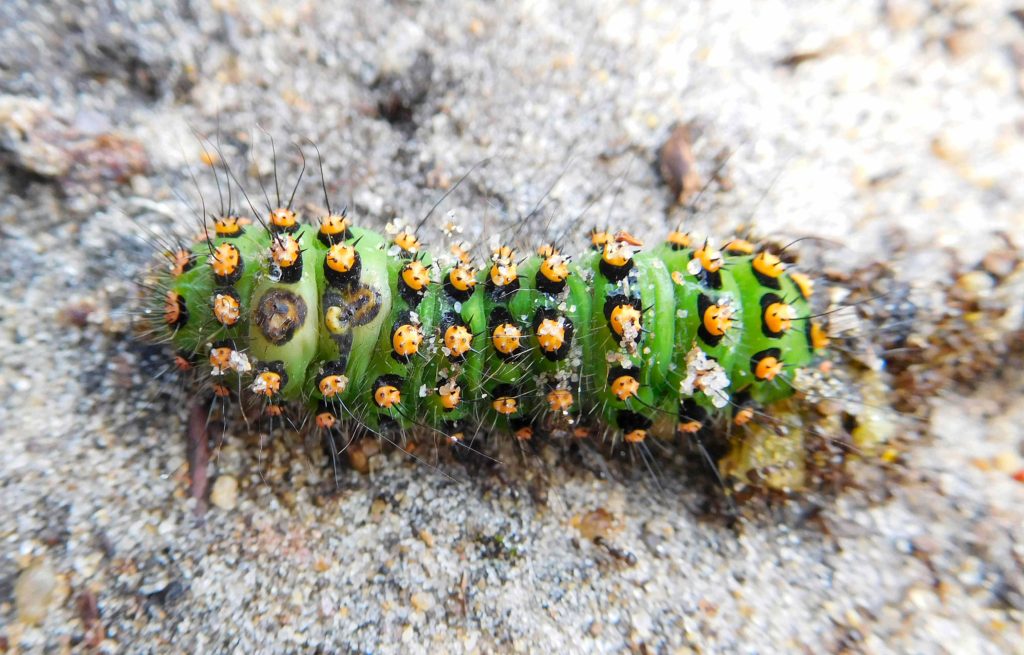
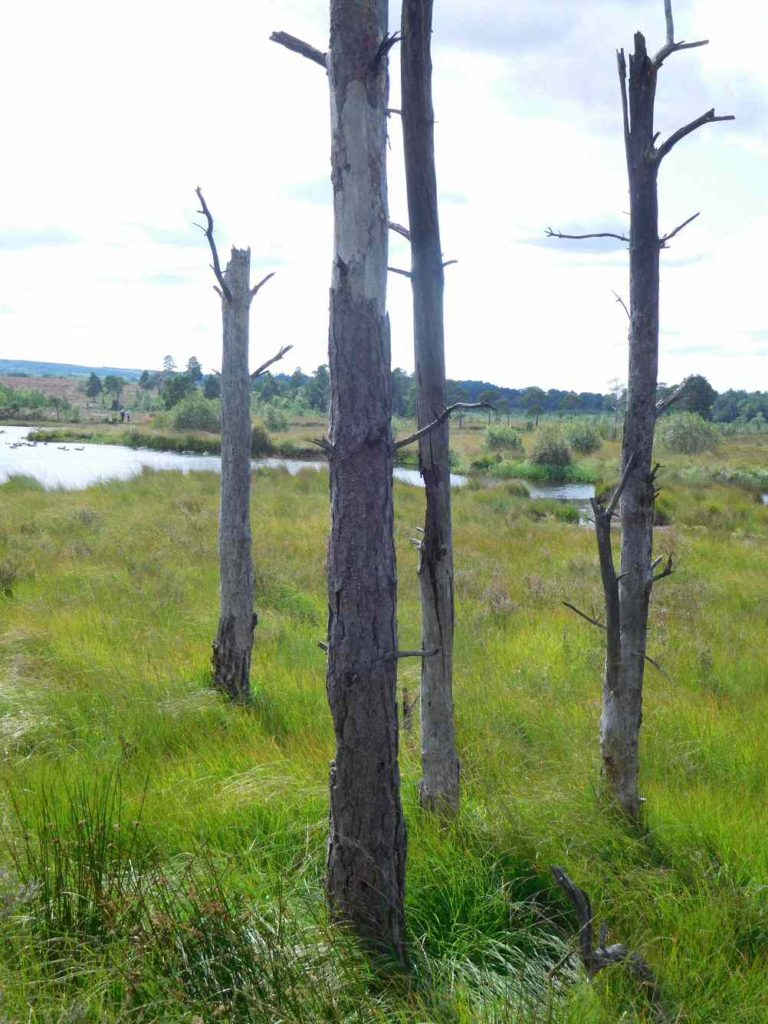
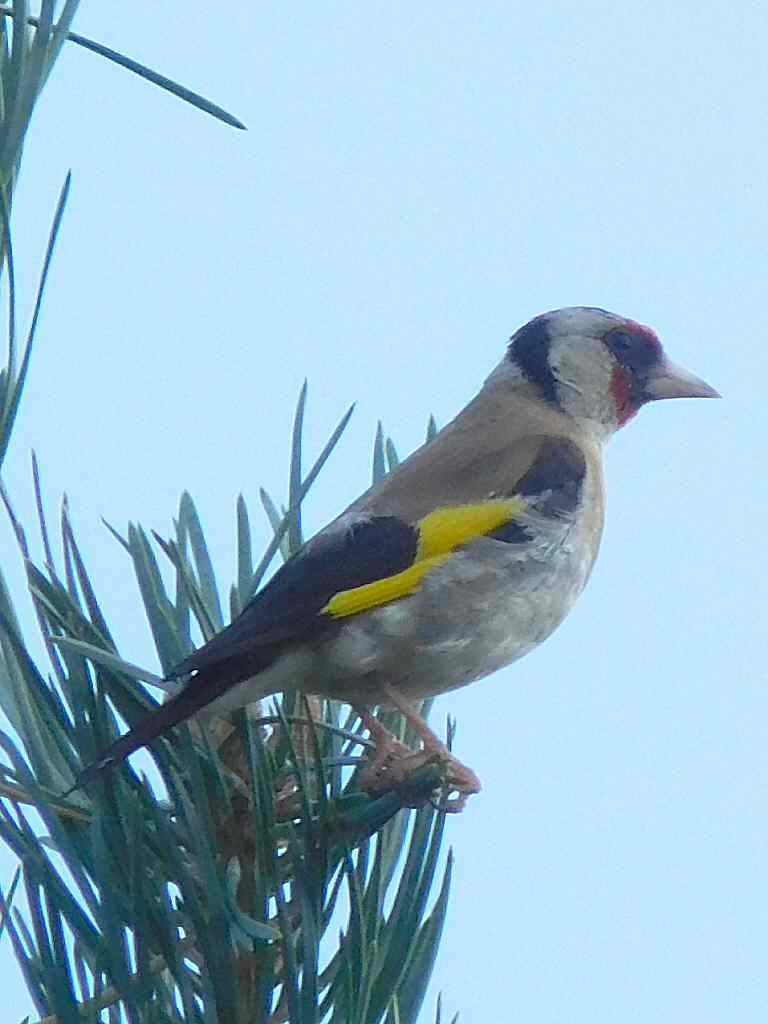
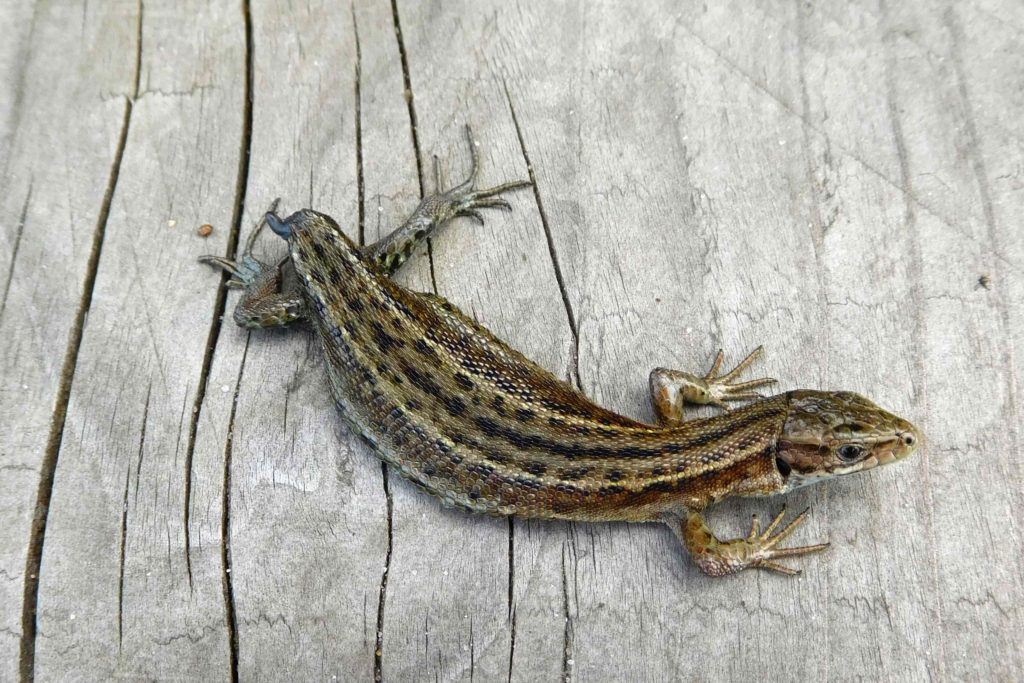
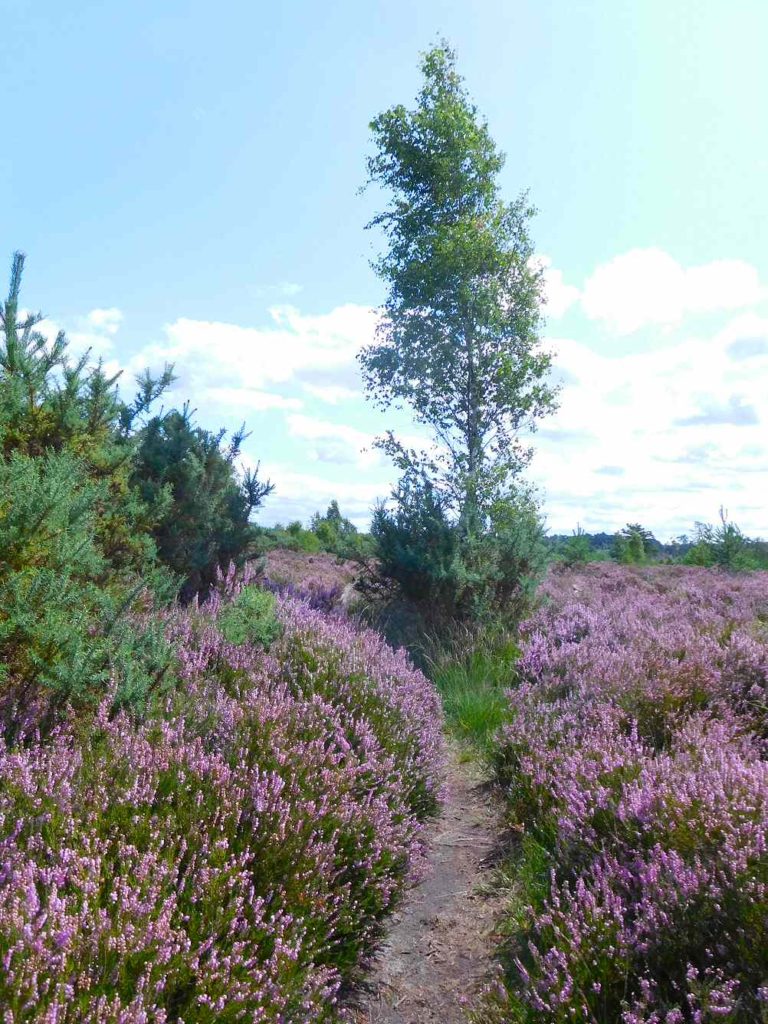
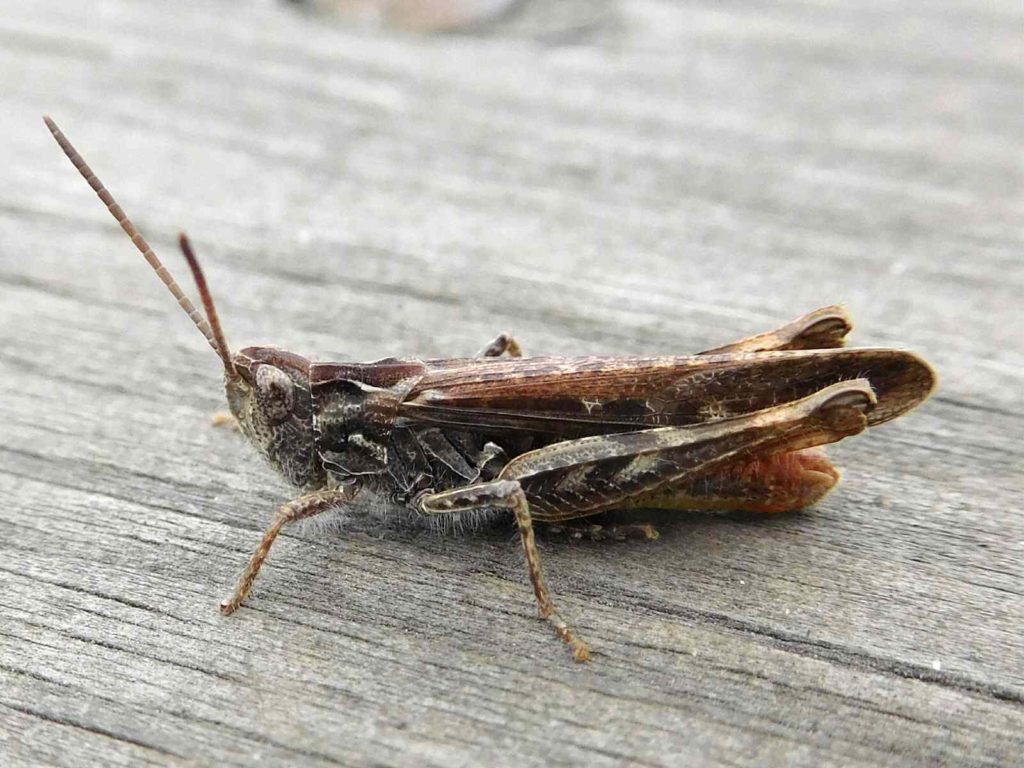
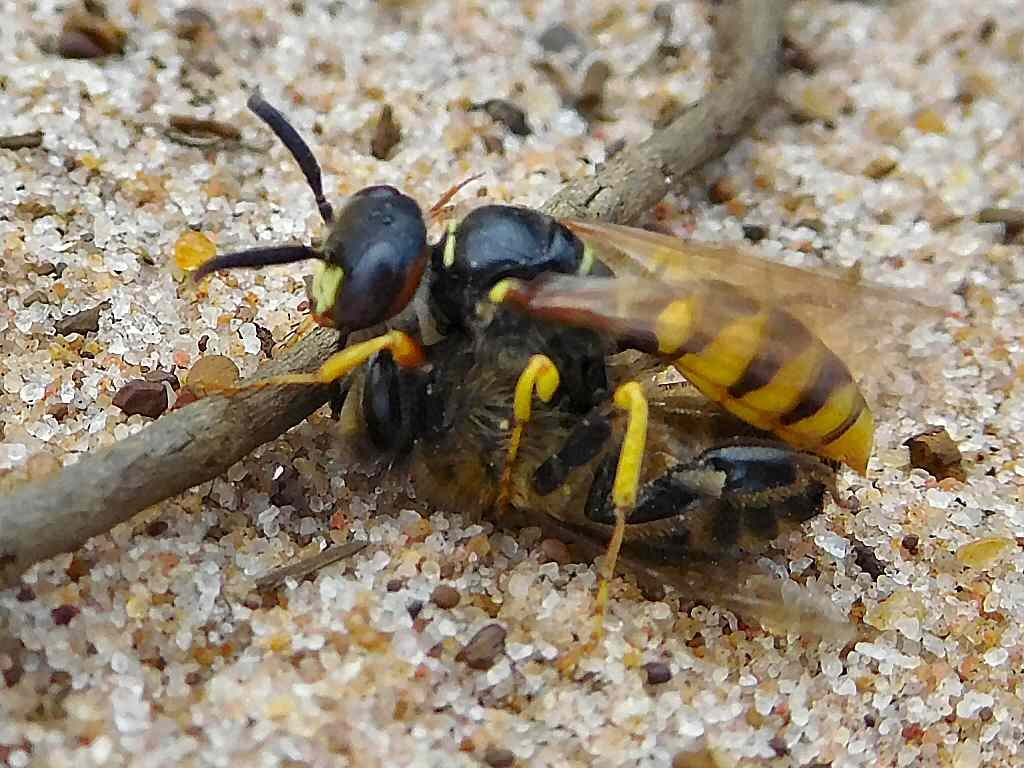
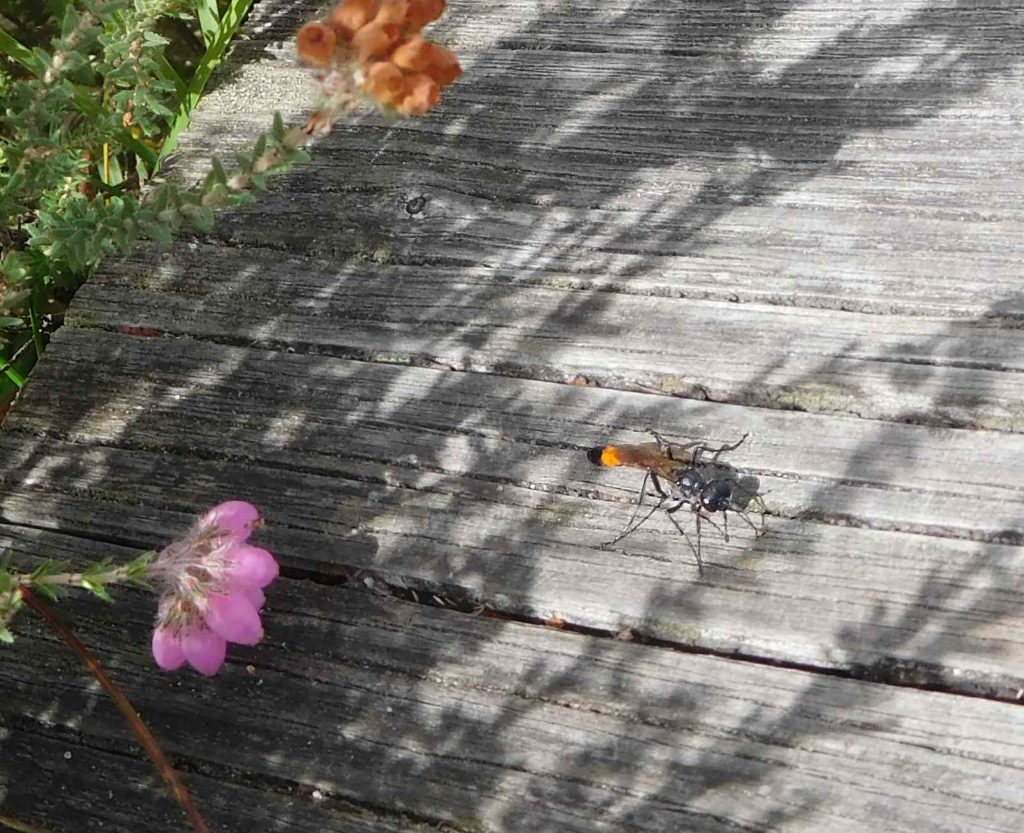
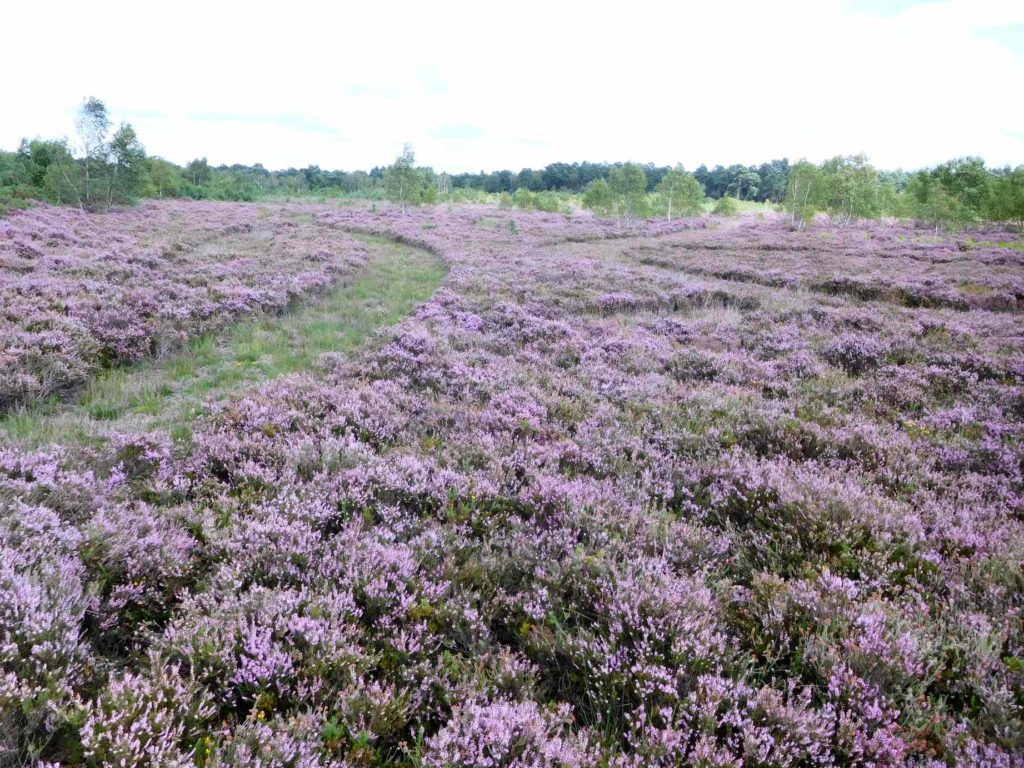
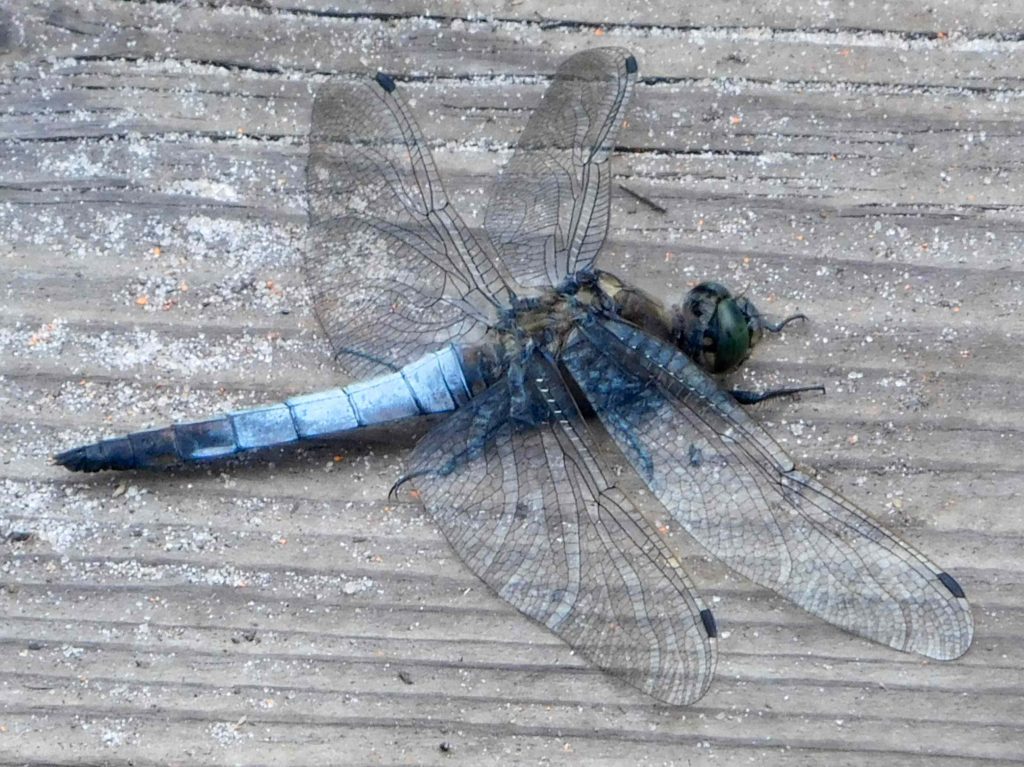
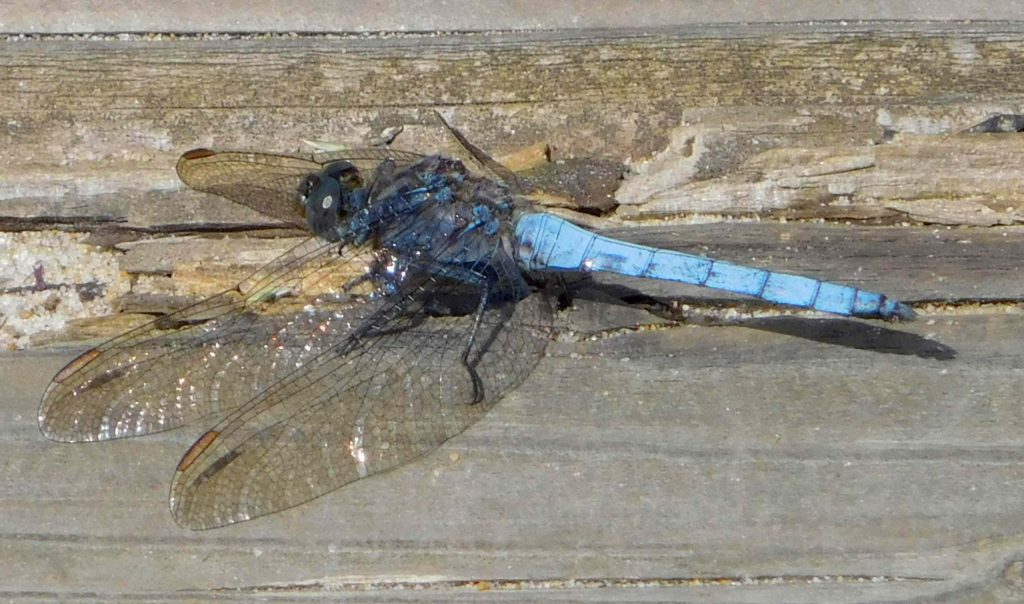
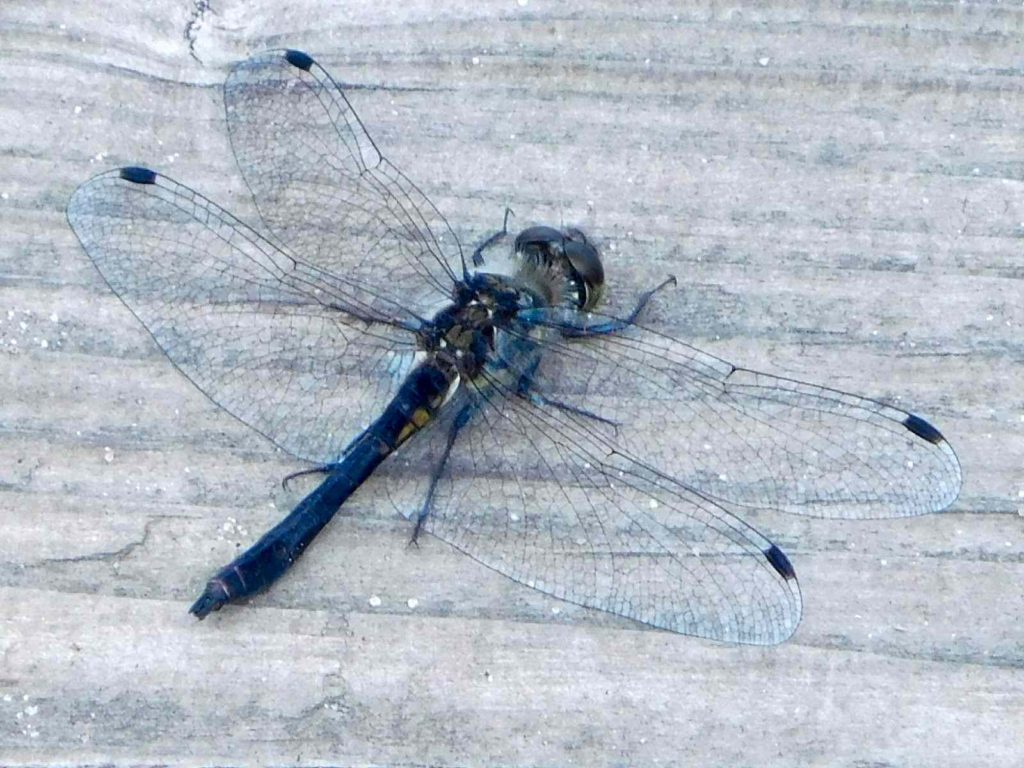
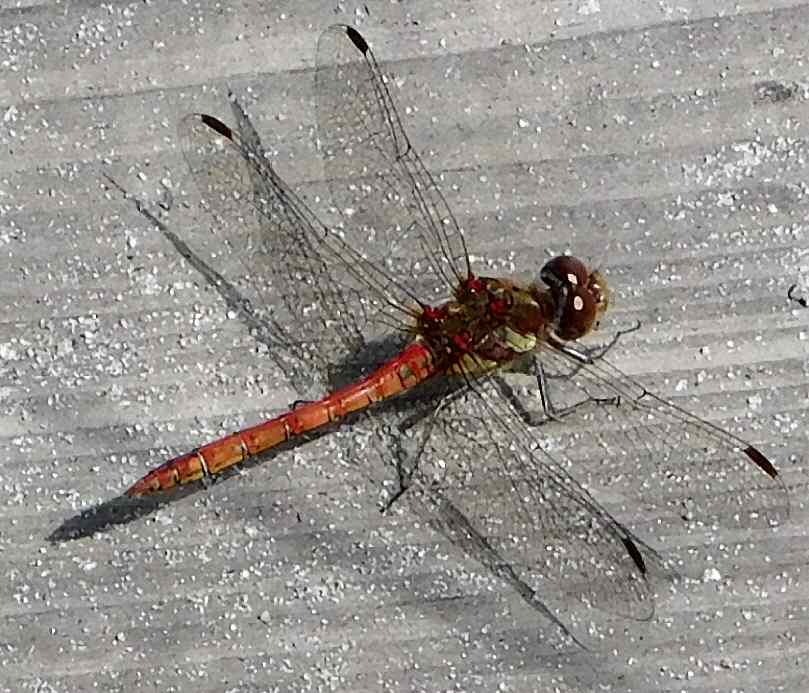
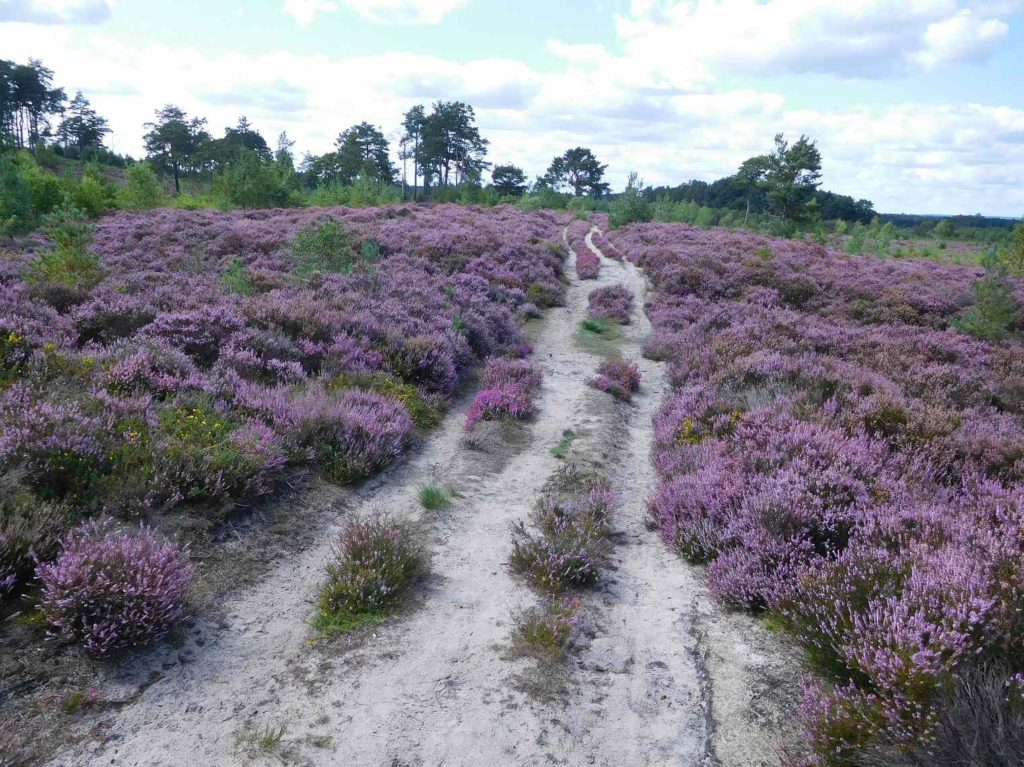
Also saw Common Blue Damselfly, Southern Hawker, Emperor Dragonfly.
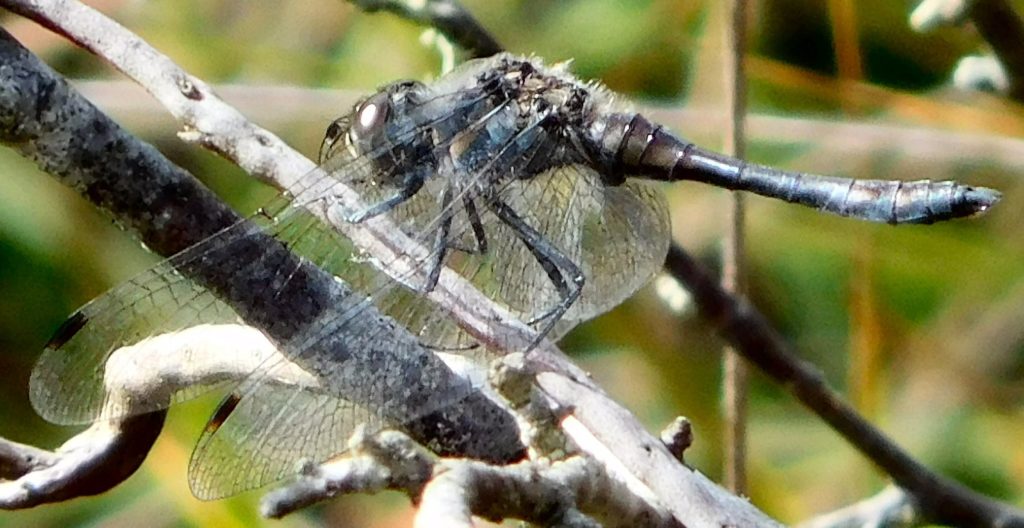
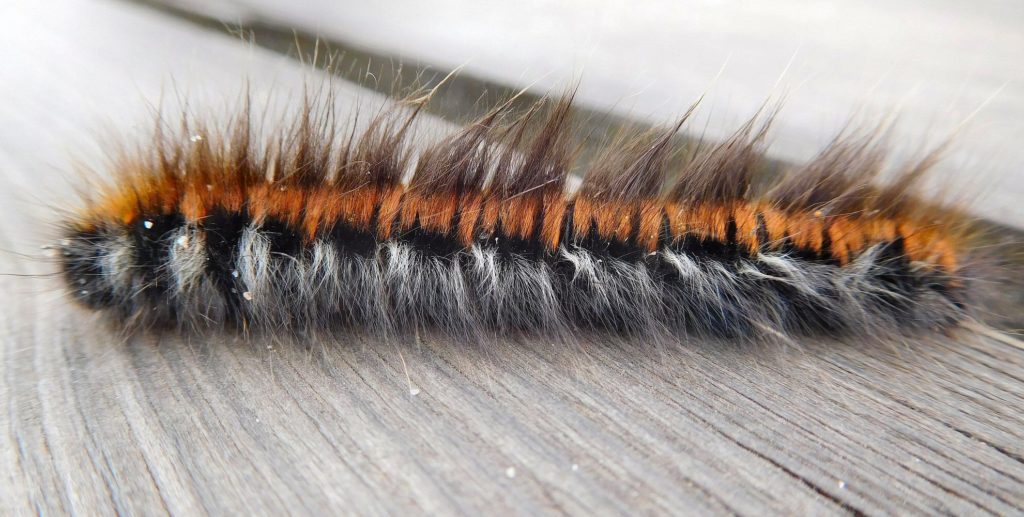
Other insects seen included a few bumblebees and some moths scooting away in the strong wind, perhaps Silver Y.
There were only a few birds about; I saw some swallows, two stonechats, a crow, a jay, a gull, a chaffinch, and a finch-sized bird with a white rump flying into a tree, perhaps a bullfinch. Three mallard loitered on the Moat Pond.
A flash of yellow revealed some Gorse in bloom, alongside some fine purple Bell Heather.
The only fungus to be seen was a brown rollrim. A dead birch trunk was colourful with Common Orange Lichen.
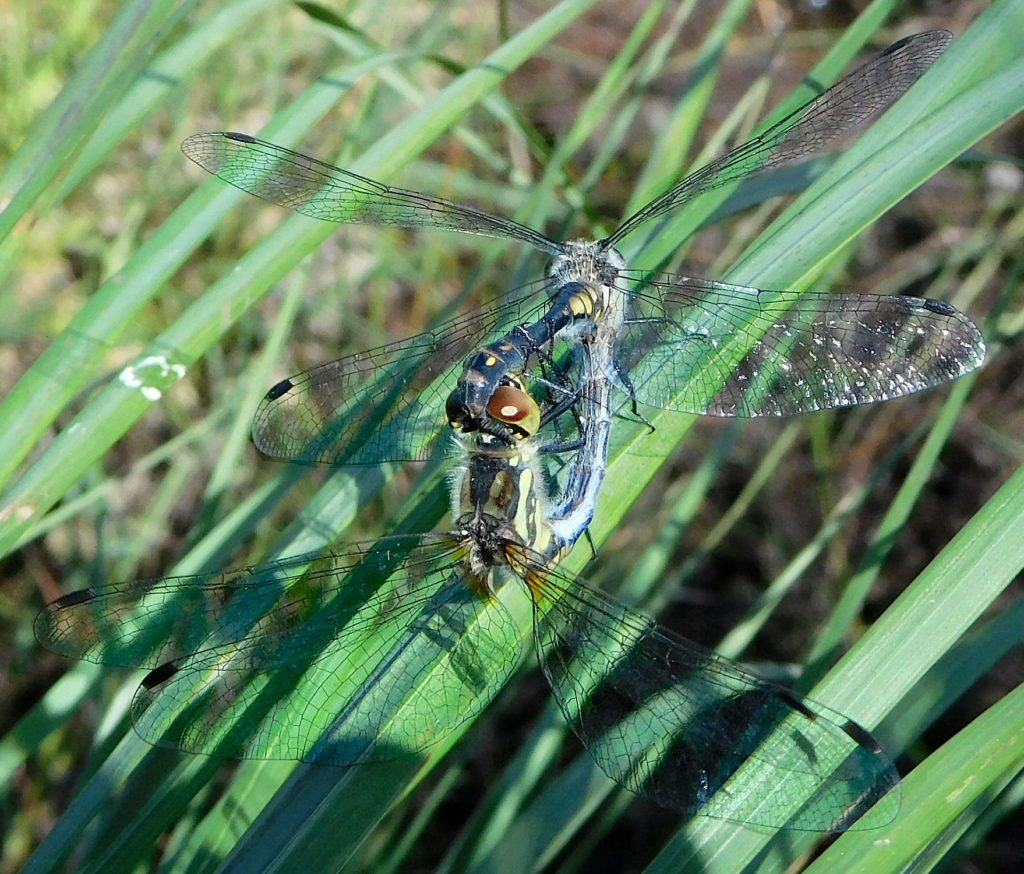
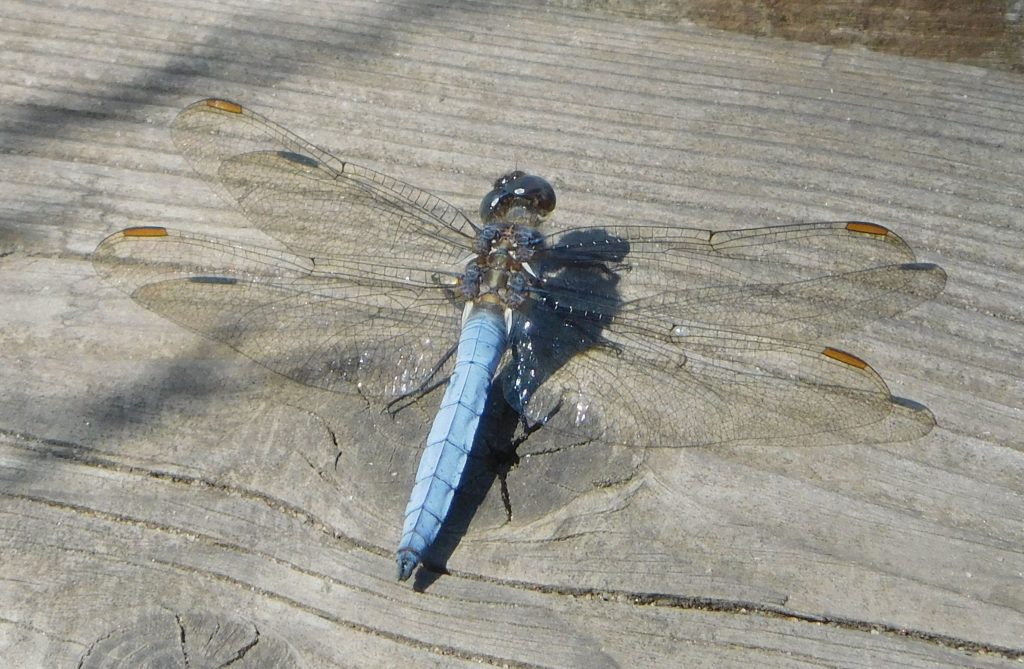
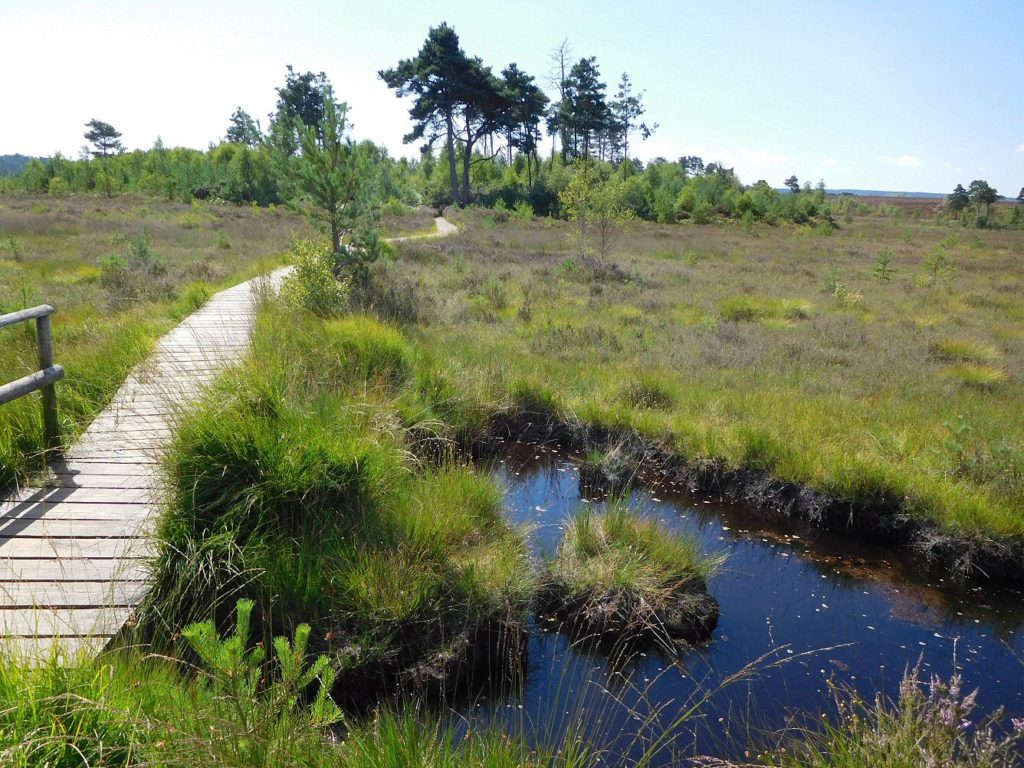
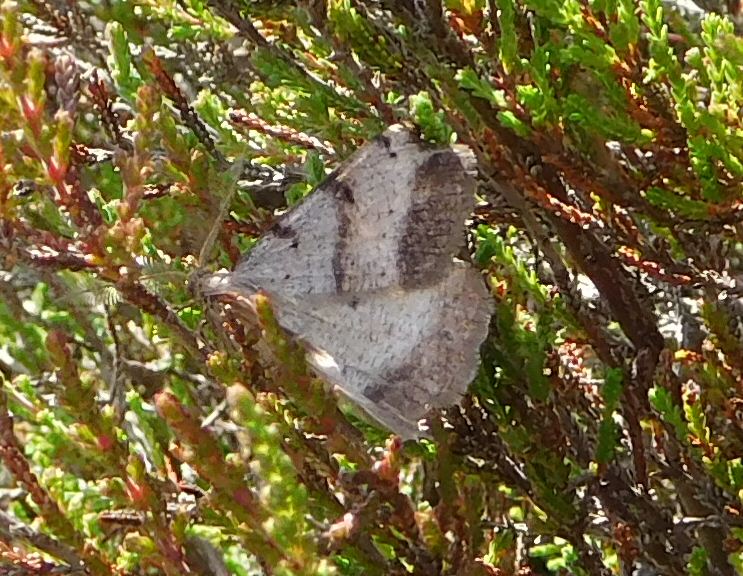
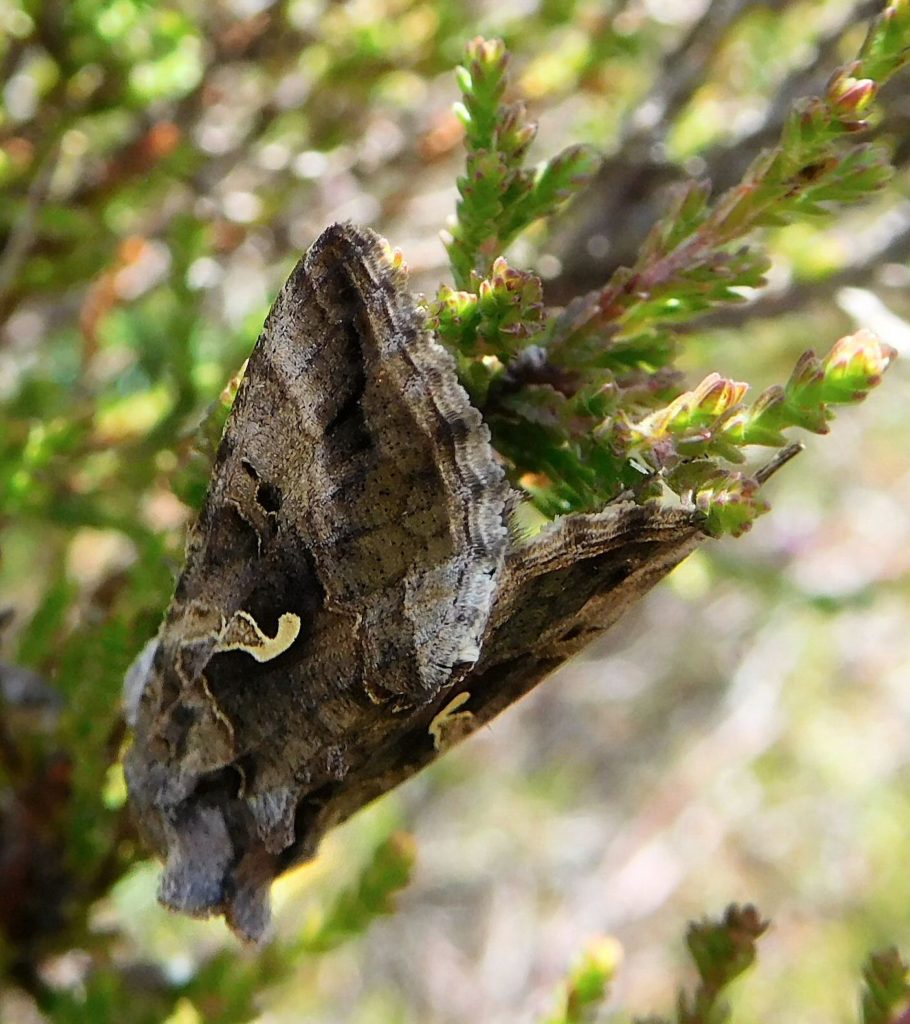
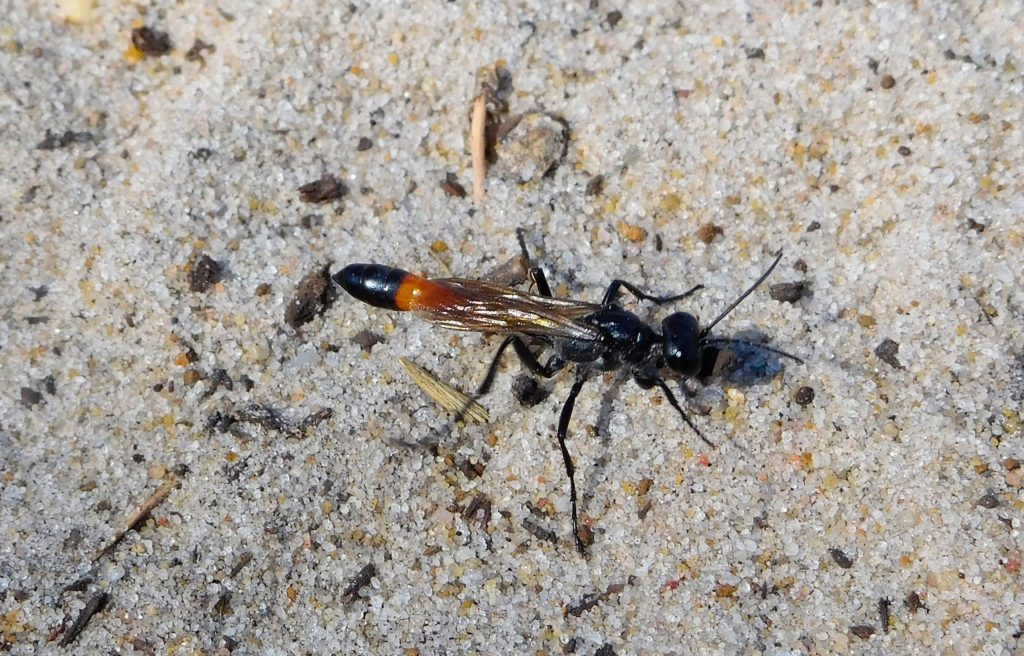
Right at the end of the walk, a huge leaf-green Emperor Moth caterpillar (Saturnia pavonia), whorled with black tufts on each segment, walked briskly like a self-propelled cylindrical concertina across the boardwalk. Just as I grabbed my camera and leant up close, it fell down the gap between two planks and disappeared into the thick green grass below. It was a sight to behold, as long and thick as a finger.
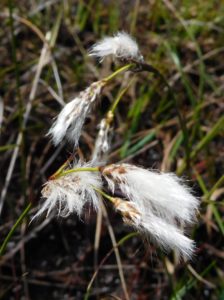
A bright, breezy, and much cooler day (16 C, not 29 any more) was just perfect for a visit to Thursley. Perhaps many of the dragonflies decided not to fly: I saw one Common Darter and (I think) one Brown Hawker, and nothing else, so anyone who went along hoping to see the Hobbies hawking for dragonflies by the dozen will have had a wasted trip (and indeed I saw several extravagantly camouflaged types with gigantic telescopes standing about looking very bored).
But everything else was in full swing. A Cuckoo called from the pinewoods. A Curlew gave its marvellously wild, bubbling call from the open marsh. A Dartford Warbler gave me the best view ever of its rufous belly and long tail, as it sat low in a scrubby Birch, giving its rasping anxiety call repeatedly. I enjoyed the view through binoculars. By the time I remembered to take a photo it was half-hidden again.
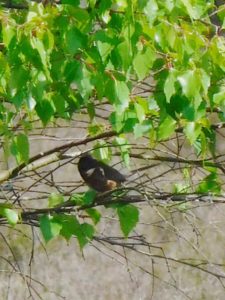
A Stonechat gave its scratchy call from a small Birch, then hopped up to some Pine trees (so, a distant shot).
A few Chiffchaffs called from the woods; plenty of Whitethroats sang from the regenerating Birches that are encroaching on to the heath. A Green Woodpecker gave its fine laughing call.
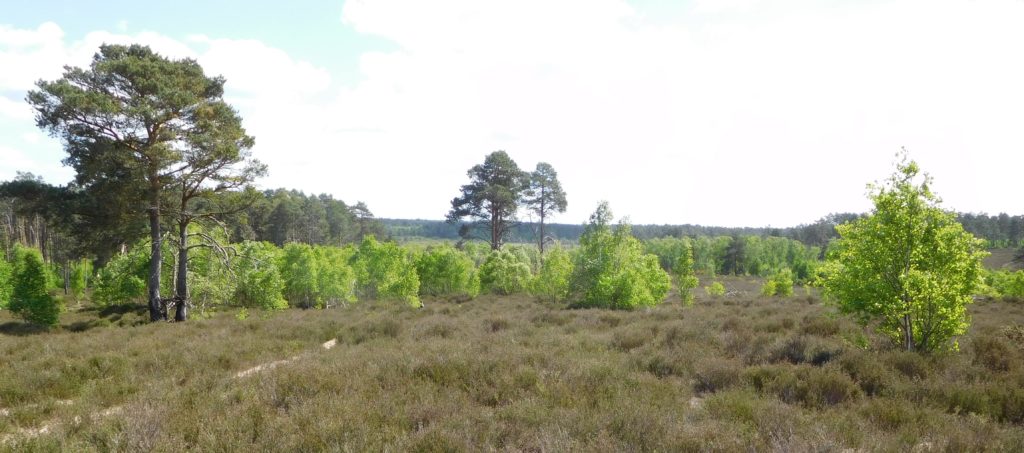
So I heard three warblers today to add to the four yesterday, so seven singing warblers in 24 hours, a little bit special.
The lichen flora on the heath was quite beautiful, with Usnea beard lichen, leafy Parmelia, bristly Ramalina (all on old Heather), and elegant Cladonia potscourer, cup, and stalk lichens (three species).
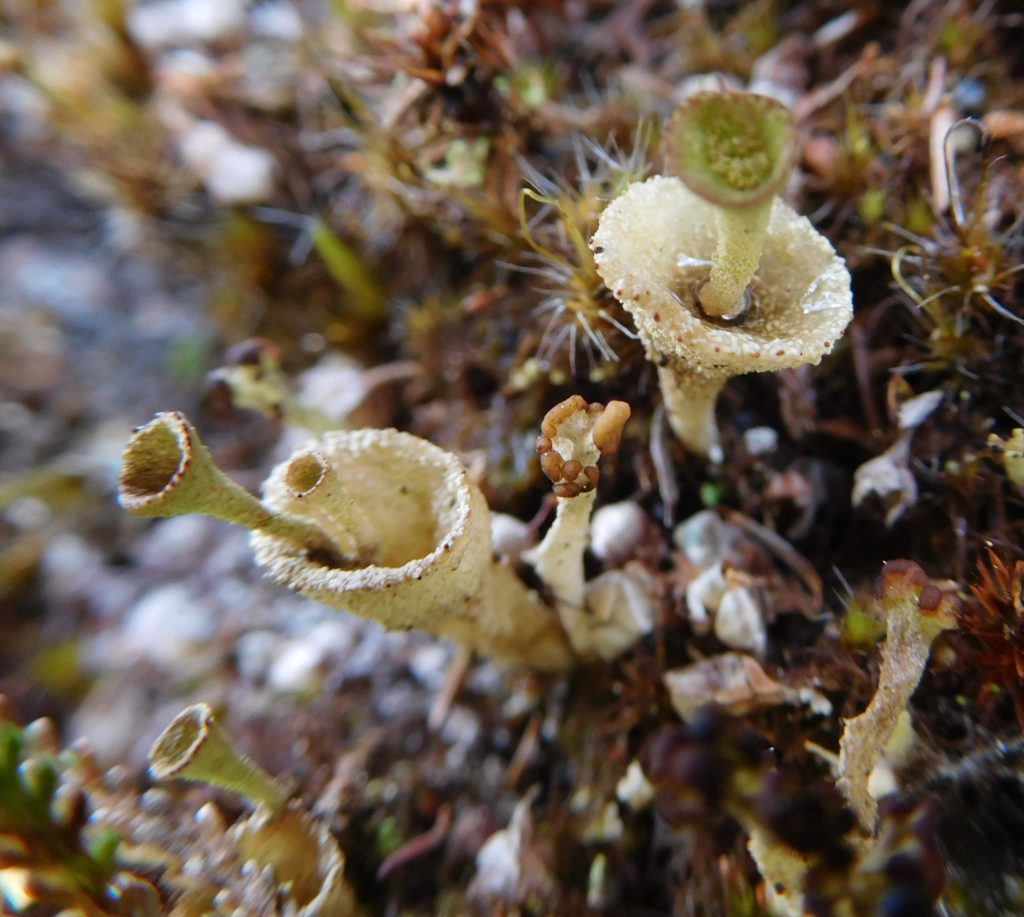
A Linnet sang from the top of a Birch. Goldfinches twittered and flitted about.
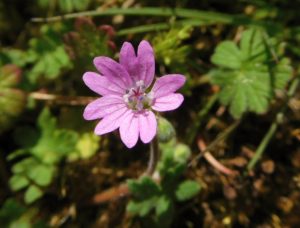
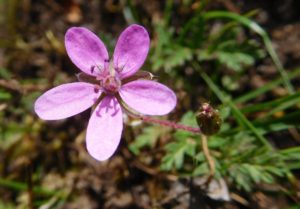
And on the path out, a Hobby leapt from a tree right in front of me, where it had been sitting watching the bog pools, waiting for dragonflies to come out and display themselves. It flew round and up, then circled, soaring, away to the south. Perhaps it was the one the twitchers had been waiting to see flying all morning.
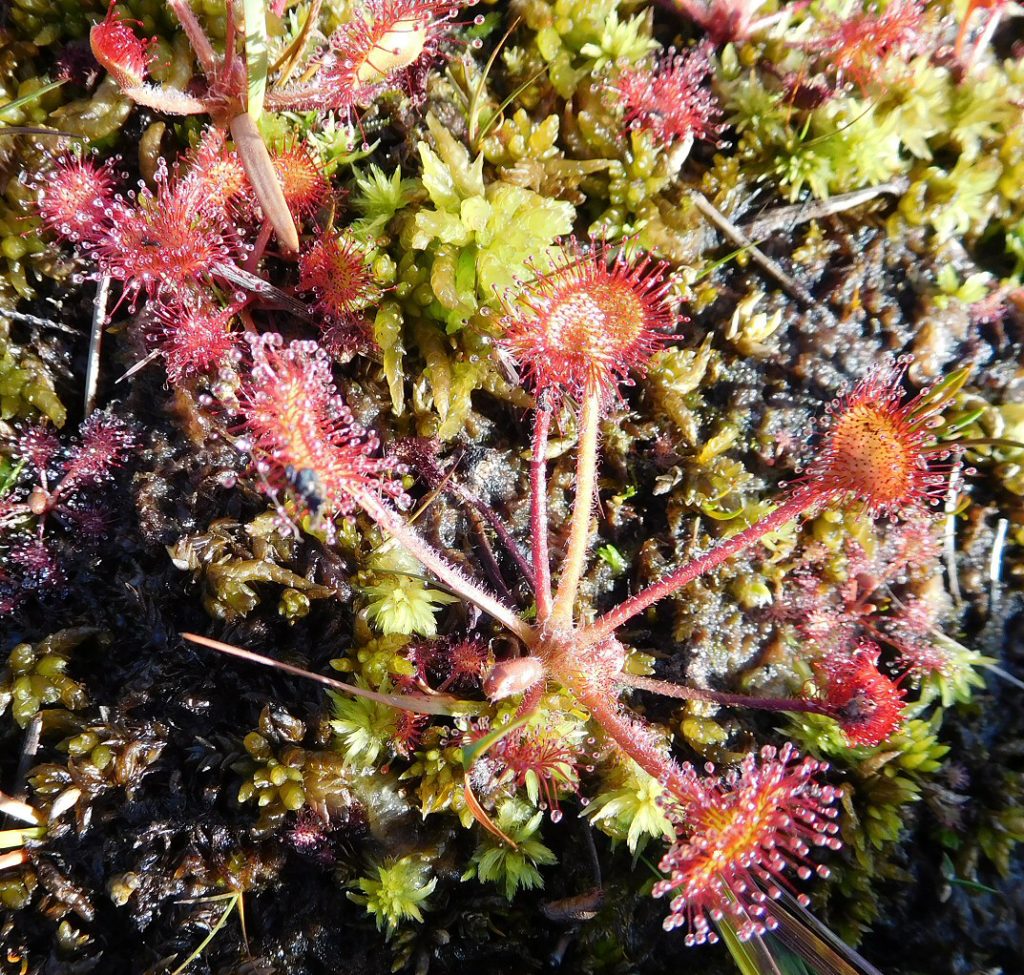
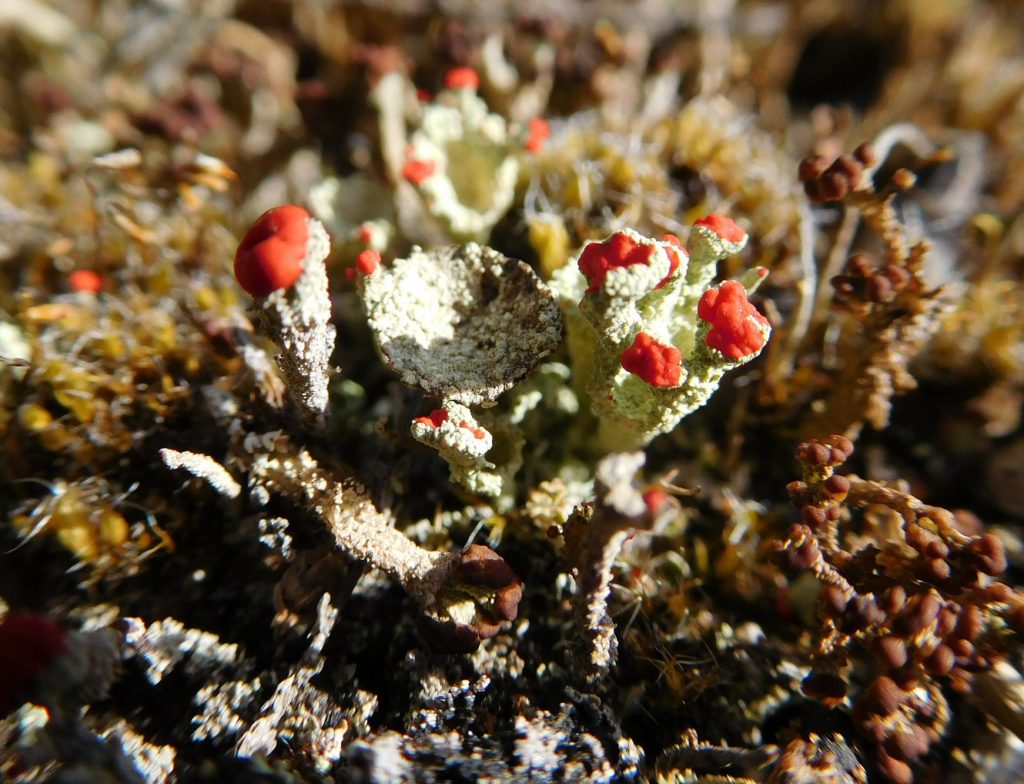
OK, ok, you wanted some dragonflies. There were masses of Black-Tailed Skimmers chasing about in groups at Pudmore Pond. Black Darters, Common Blue Damselflies, and Small Red Damselflies skittered about the smaller ponds. A large Hawker or two dashed past, unidentifiable, probably Southern Hawker. A Keeled Skimmer perched conveniently nearby, daintier than the Black-Tailed.
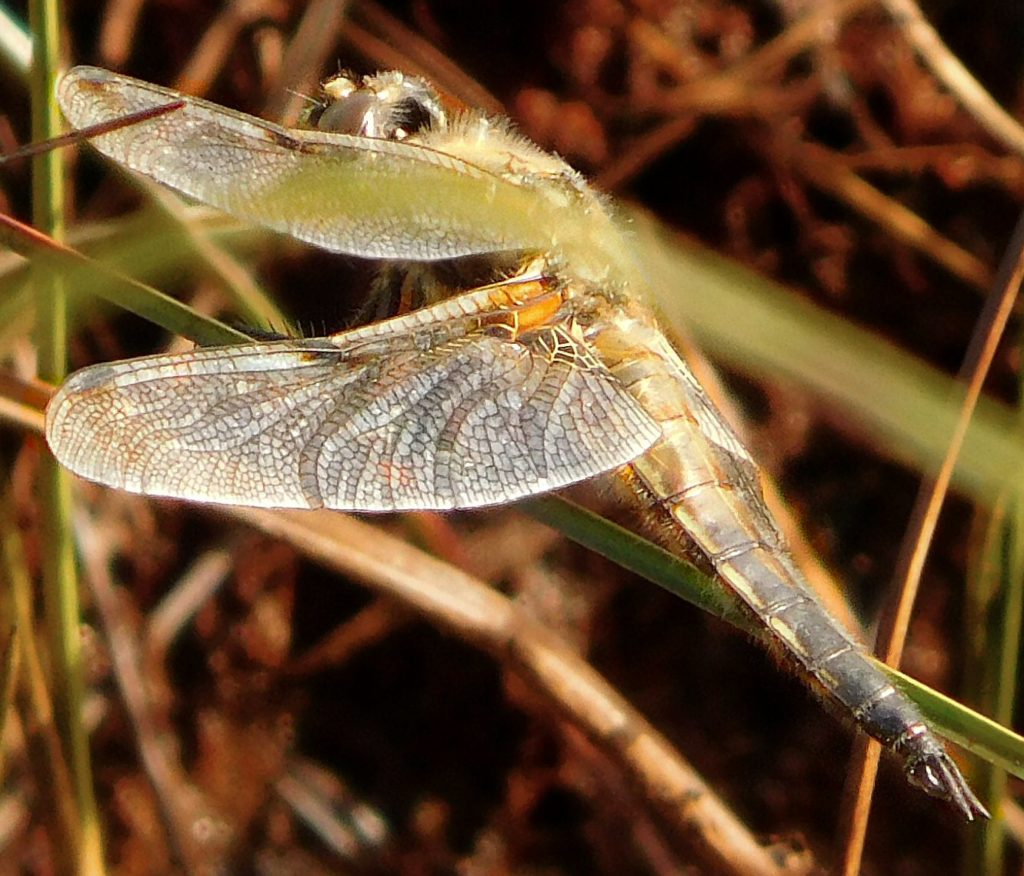
Among the birds, some 50 Swallows were roosting on telegraph wires early in the day. Families of young Stonechats gave grating contact calls, unlike the stone-clicking call of the adults. A Redstart flicked its tail in the bushes. Skylarks rose and sang almost too high to see against the clouds over the heathy hills, Shelley described it perfectly in his ‘To a Skylark’: “a flood of rapture so divine”.
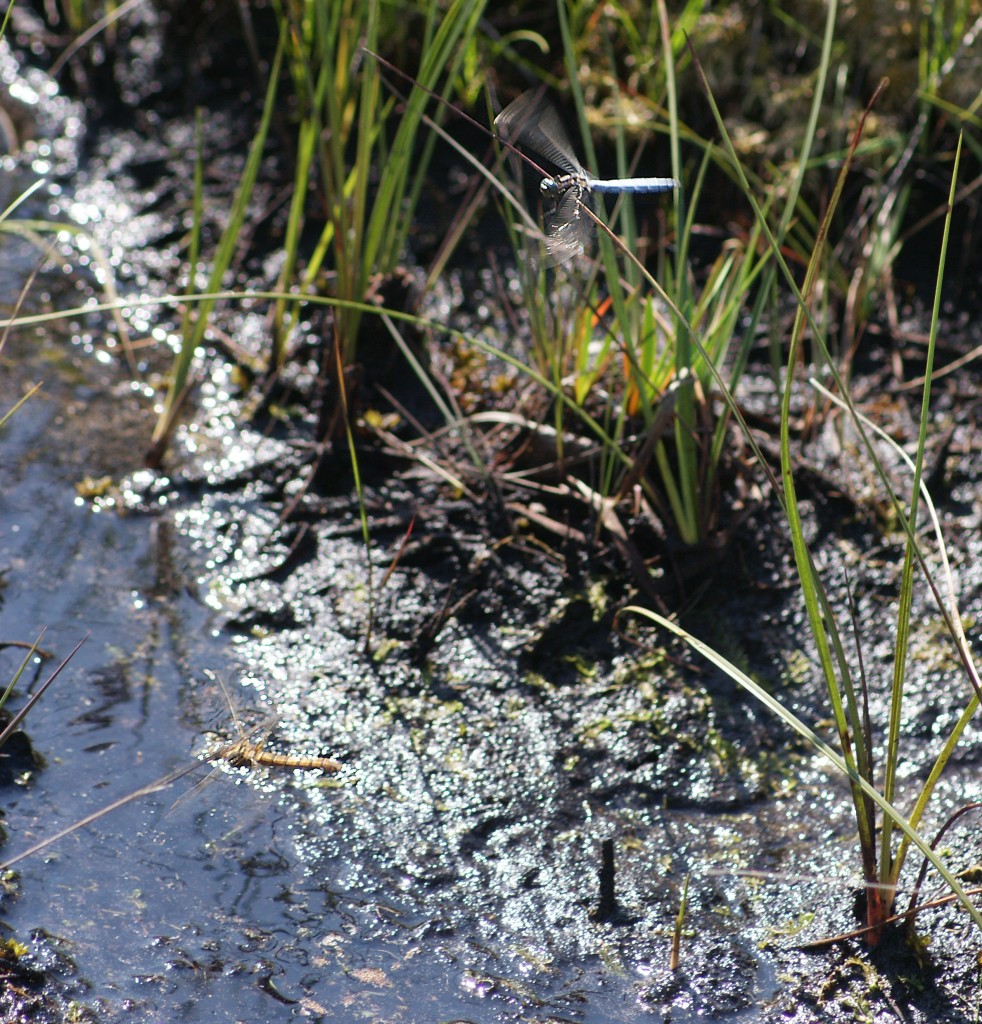
It was suddenly summer again this morning, so I packed cameras, binoculars and a sandwich and went down to Thursley in glittering sunshine. This photo perhaps catches something of the dazzle and sparkle of the bog pools and their shimmering guardians: a pair of Keeled Skimmers (Orthetrum coerulescens) are flying over the water; she is darting down to lay eggs, he is hovering above, guarding her from other males. Their wings sparkle and flash, and it is amazingly difficult to follow, frame, focus and shoot fast enough to get anything like a decent picture. But I rather like the motion blur in this one, and if it’s not perfectly in focus, you know why. I hope you like it too.
I was pleased, too, with this shot of an Emerald Damselfly, the sparkling water behind it forming a pattern of pleasantly out-of-focus circles.
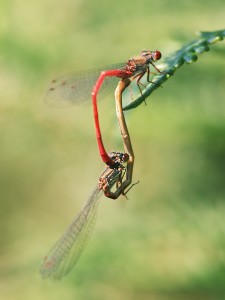
There were quite a few Small Red Damselflies about, mostly single but a few egg-laying pairs; and a modest number of blues, most likely Azures.
Apart from the hundreds of Keeled Skimmers, other dragonflies included Common Darter, Black Darter (I only saw a few females today), Black-Tailed Skimmer (just one), and Southern Hawker.
We saw few butterflies apart from Large Skippers which bustled about flowers near the boardwalk, and little Gatekeepers (I do mean they were smaller than usual) … until we arrived on the amazing Parish Meadow that was once a dump for emptying cesspits. Now it has an ecology strikingly unlike the rest of Thursley Common.
The meadow was full of Meadow Browns, Graylings (mating), Ringlets, Essex Skippers, a Brimstone, Large and Small Whites, and … a Purple Hairstreak (about the Oak trees). The rabbit-bitten pasture, dotted with little flower-stalks of Centaury, was thick with Ragwort, which in turn was richly covered with Cantharid beetles, solitary bees, wasps, and hoverflies and other Diptera. We put up a Silver Y moth which obligingly landed in front of us and perched in the open. We found the traces of a Green Woodpecker killed by a Sparrowhawk; but happily saw a live one in the Oaks nearby.
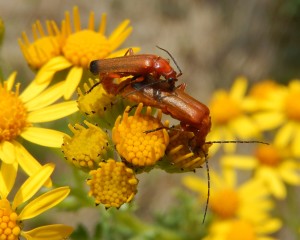
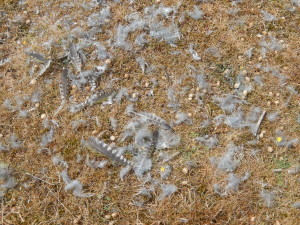
The boardwalks were busy with Lizards and Skimmers sunning themselves.
We met a local group of birders, complete with masses of tripods, telescopes and cameras, and asked if they were looking at the Stonechats. No, they replied, the Hobbies, there are three. We looked up, and sure enough there were three raptors. But in our binoculars, they turned out to be a Kestrel, a Hobby, and a Red Kite! Perhaps there were some more Hobbies somewhere else.
A little way further, absent the birders, we found a dead tree with some juvenile birds perched about it, and a lot of twittering. Yeah, a typical Chiswick Cafe. Some of them were young Redstarts; the others, young Stonechats: pretty confusing. But the Redstarts flew up into a Pine tree – not a Stonechatty thing to do – and sure enough, there was an adult Redstart on a lower branch, plain to see. And a Stonechat adult rasped out its grating call over to the right.
In a group of tall Oaks, we sat and ate a sandwich; and a Spotted Flycatcher flew across and perched on a high dead branch. It spent five minutes looking about, twisting its neck remarkably, but making no sallies. When I was a boy I saw them in the garden every summer; now they’re really something special, like, er, Starlings and House Sparrows.
The sandy heath paths were full of little holes dug by Ammophila Sand-Wasps, and others made by Philanthus Bee-Wolves (or Bee-Killer Wasps). Both are called digger wasps (“Sphecidae”) in most books, and it’s certainly a good name, but the family has been split up, so Philanthus is now in the Crabronidae, which contains most of the old “Sphecidae” (we’ll have to say sensu lato for this); the new Sphecidae (sensu stricto) only contains what used to be the Sphecinae, which includes Ammophila. Rich scope for confusion. Sphex is the ancient Greek word for wasp, and it’s interesting that Linnaeus chose this word for a digger wasp rather than the social wasps, which have the Latin name Vespa for the hornet, and Vespula, little wasp, for common wasps.
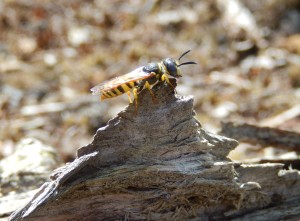
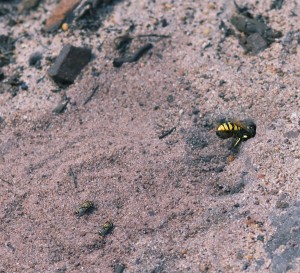
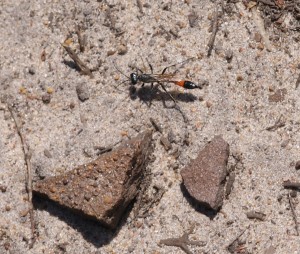
Out of a low bush of willow and gorse right beside a boardwalk came a strange, quiet but insistent squawky chatter of alarm. Peering in between the branches, a small slim dark bird with a long dark tail could be seen hopping about anxiously: a Dartford Warbler. It was extraordinary to be within a few feet of this shy, rare and retiring bird, and watching it for several minutes. There are actually quite a few on the heaths of Surrey and the south coast, but they’re never easy to see—most of my views have been of disappearing rear ends, diving into gorse bushes.

On a gloriously sunny, still winter’s day, Thursley Common looked wonderful. There were few signs of wildlife – a Crow or two, some Stonechats hawking for flies from the tops of small bushes – but wide horizons, quiet, a sense of space and freedom.

Some dead pines displayed magnificent natural patterns, the product of bare wood drilled by Longhorn Beetle larvae and exposed to the elements.
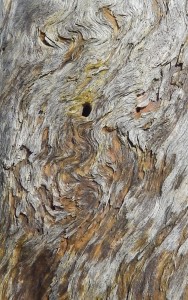
We visited Thursley’s thousand-year-old church – the north side of the choir has two small narrow Saxon windows, walled in for centuries. The church, of St Michael and All Angels, was wisely sited by the Saxons on a ridge of the Greensand, high and dry above the boggy moorland.
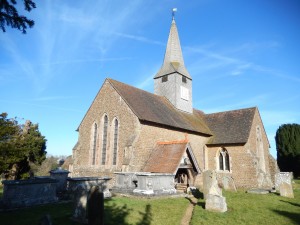
We enjoyed the modern glass doors engraved with a Tree of Life which turned out to be a Silver Birch. Among the animals praising God in the glasswork are a soaring, singing Woodlark; a perched Nightingale; a Lizard, a Purple Emperor butterfly, a Common Blue butterfly, and a selection of dragonflies: clearly the local fauna.